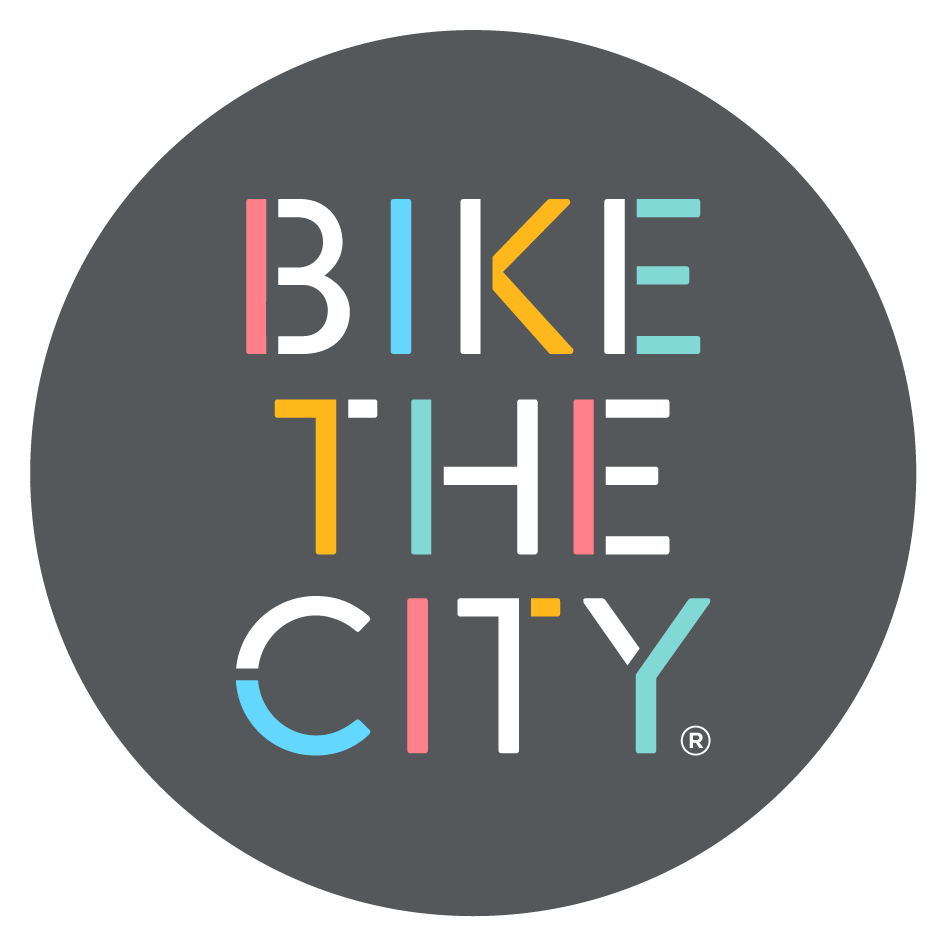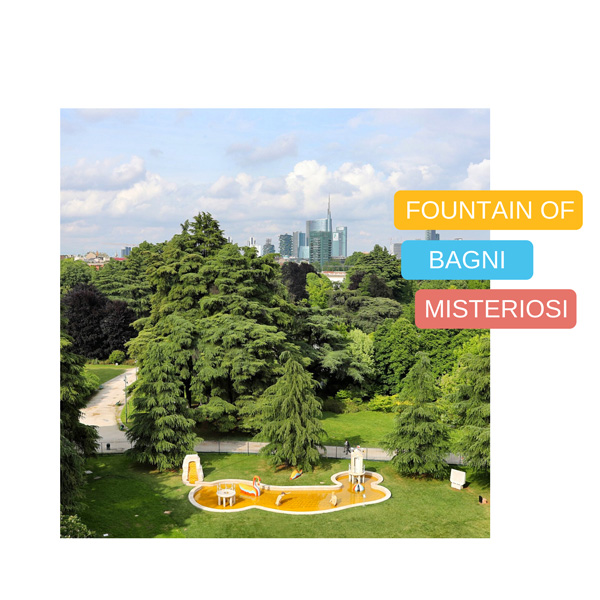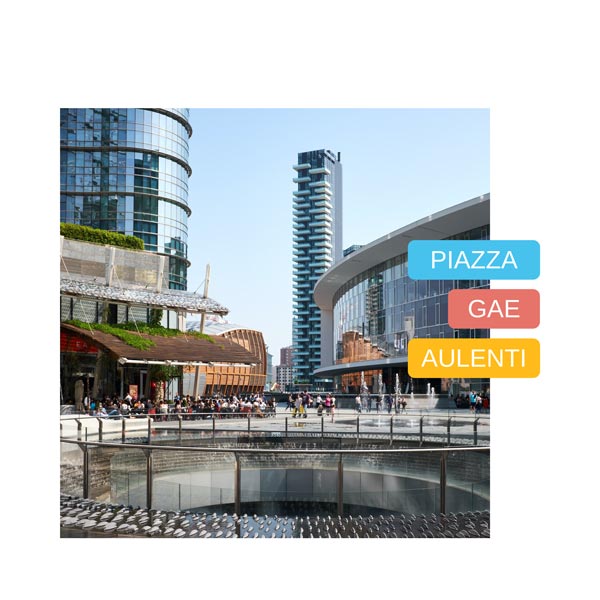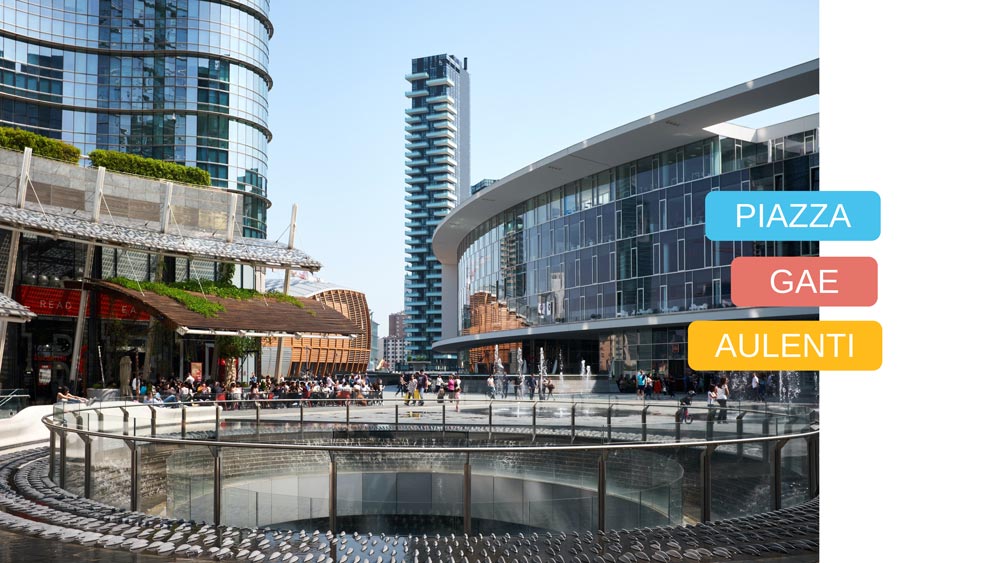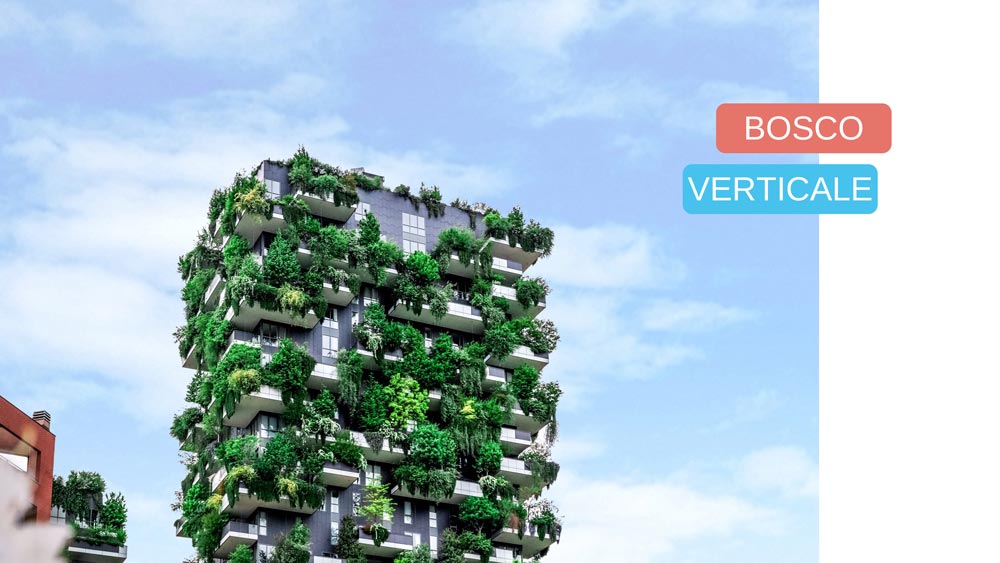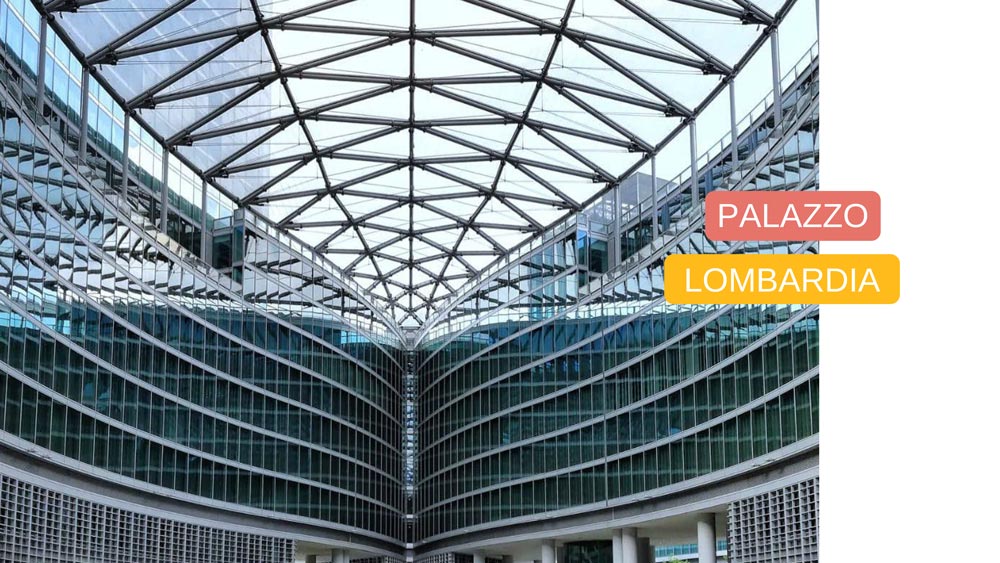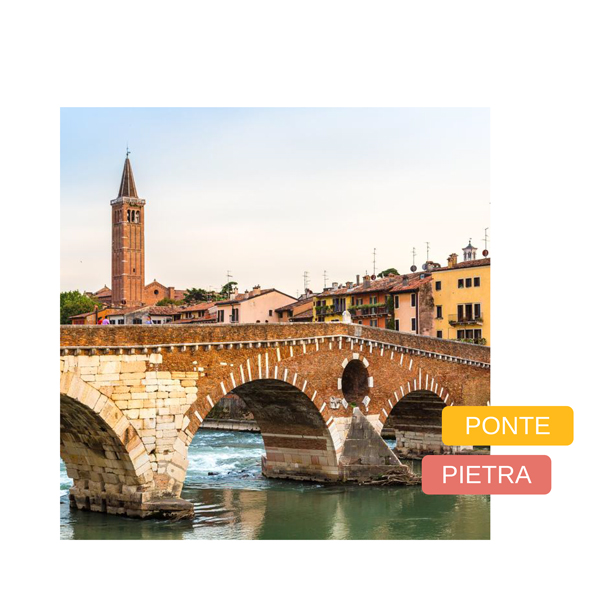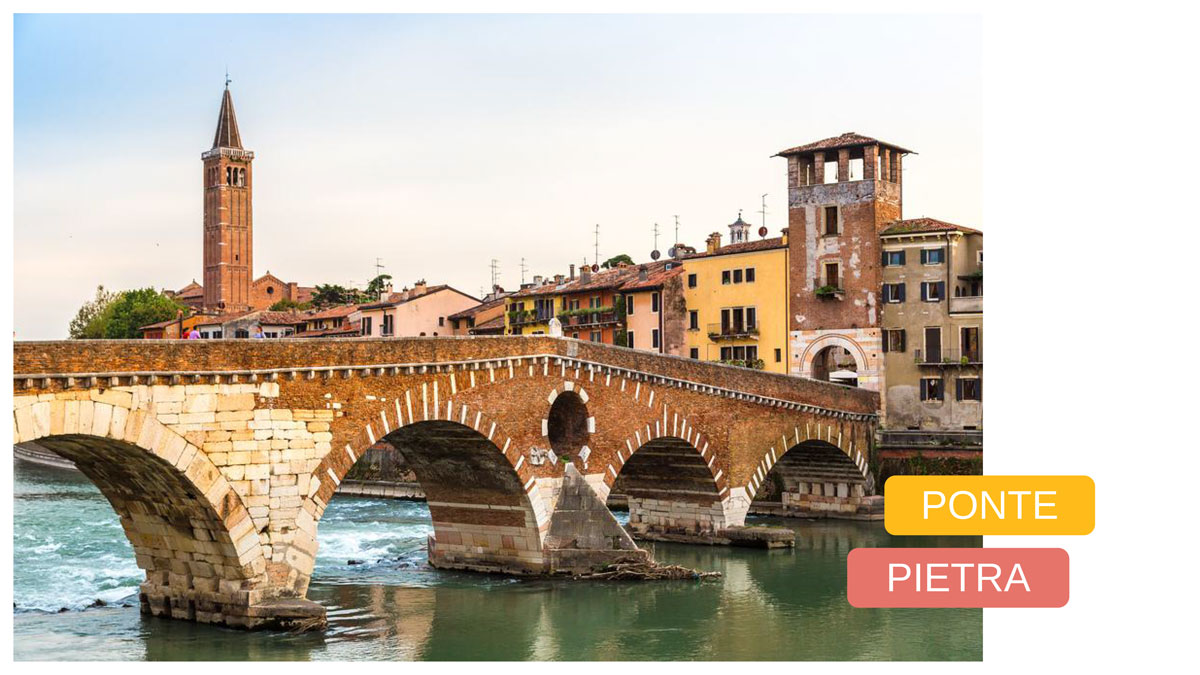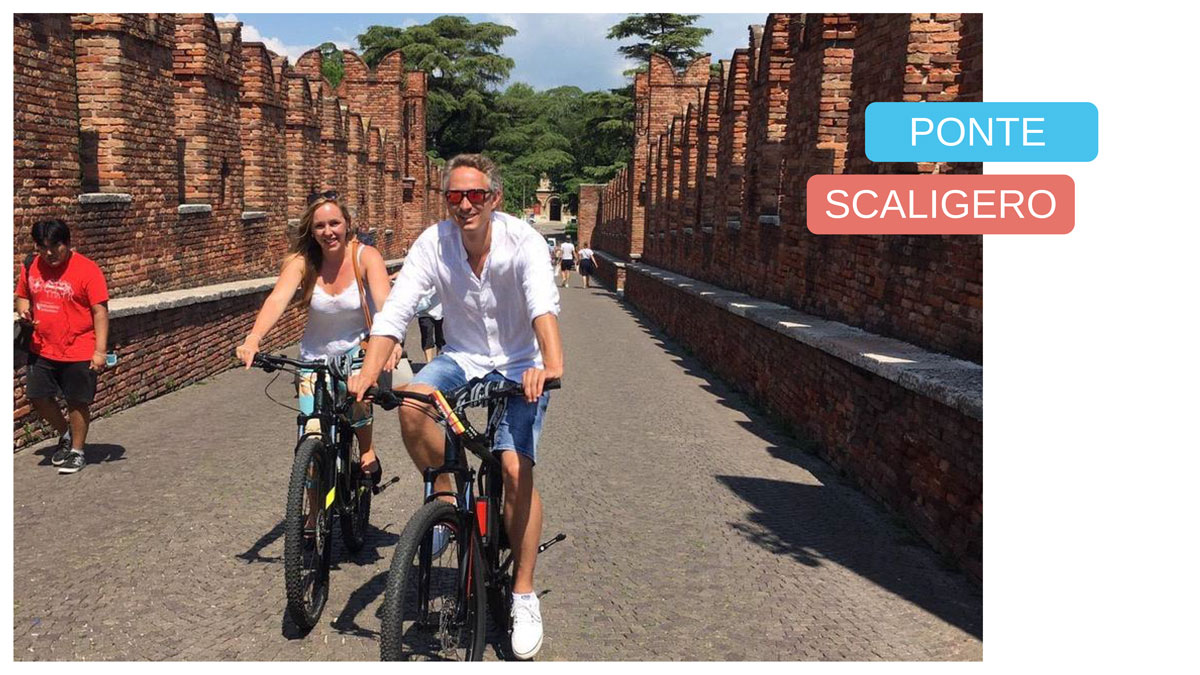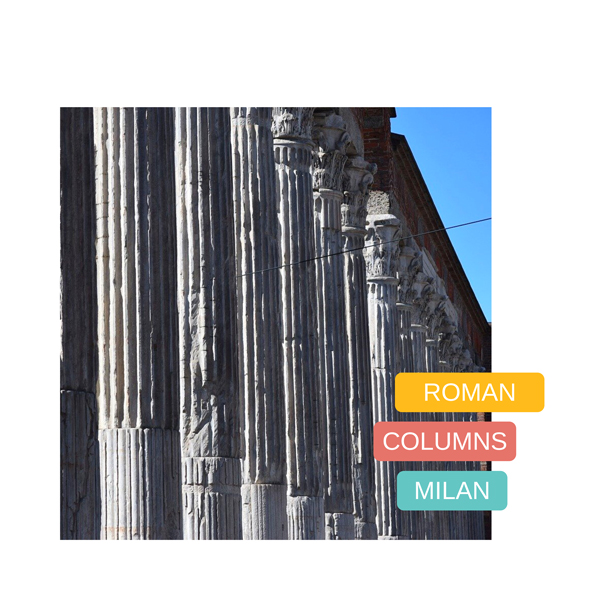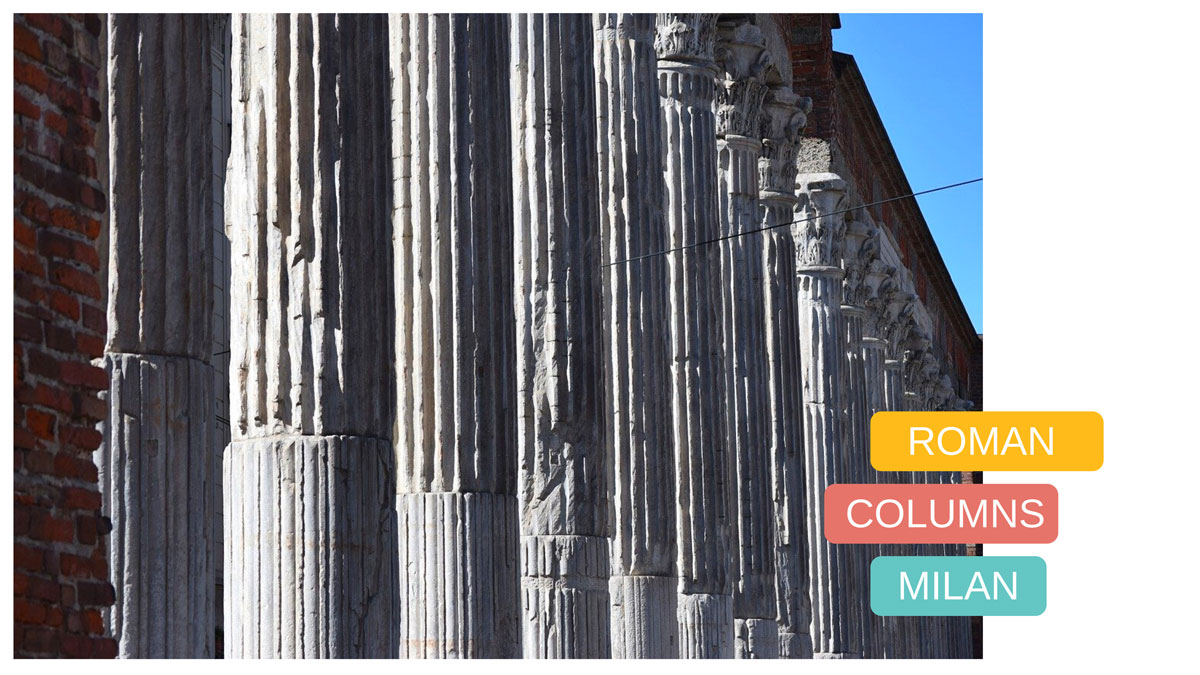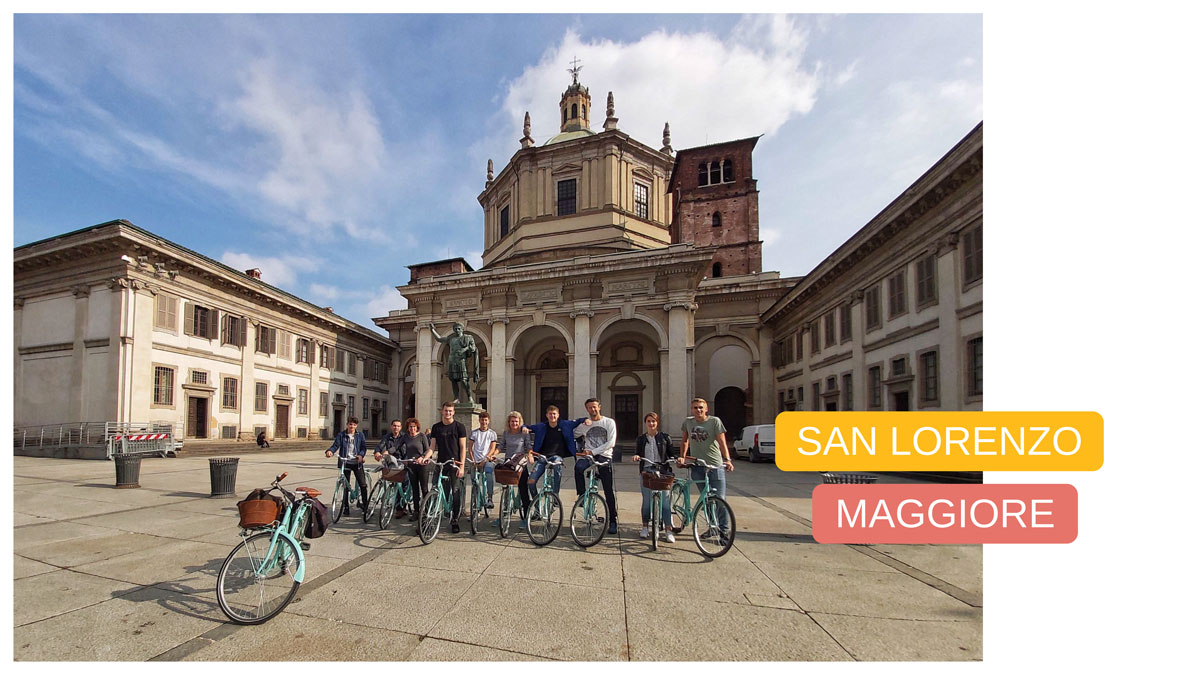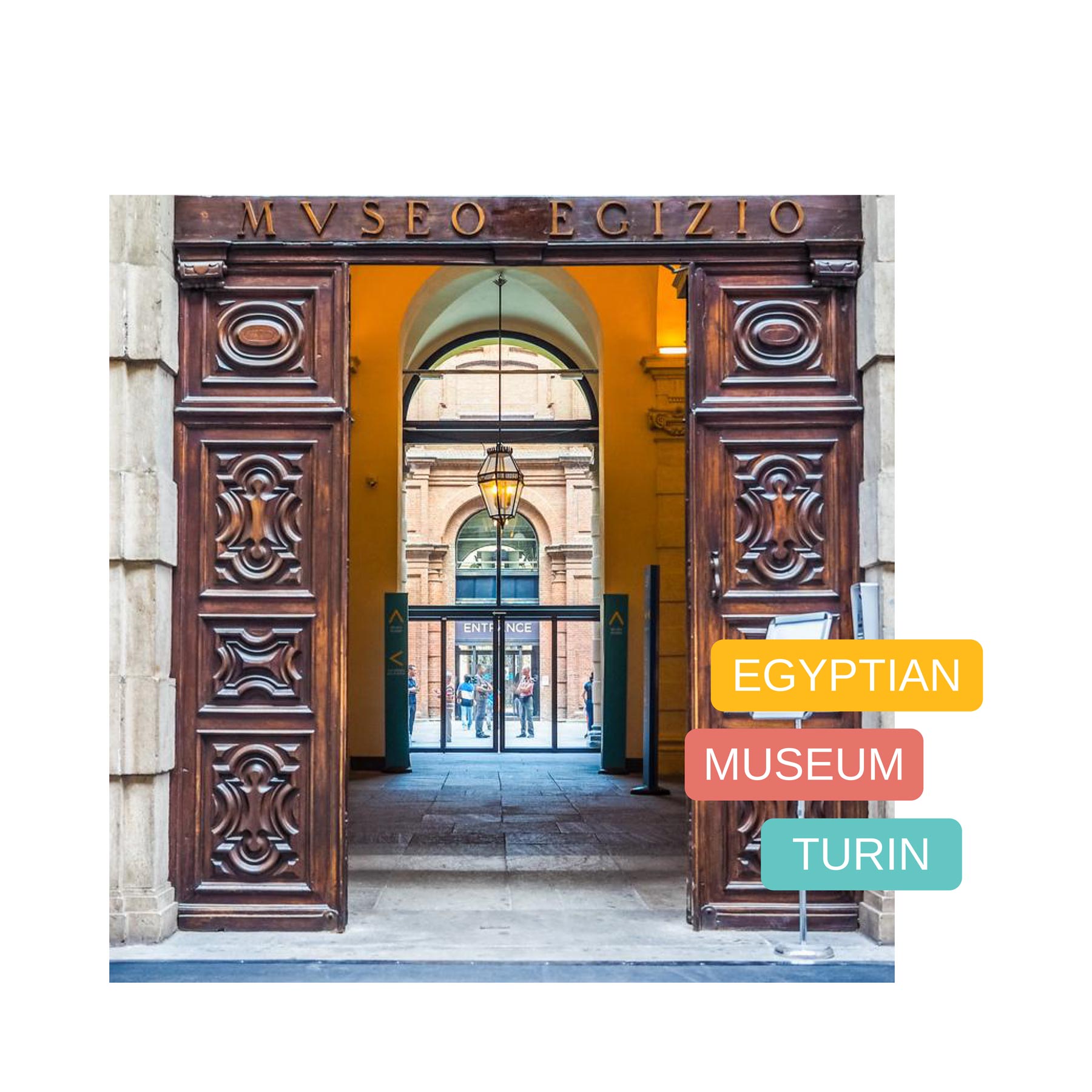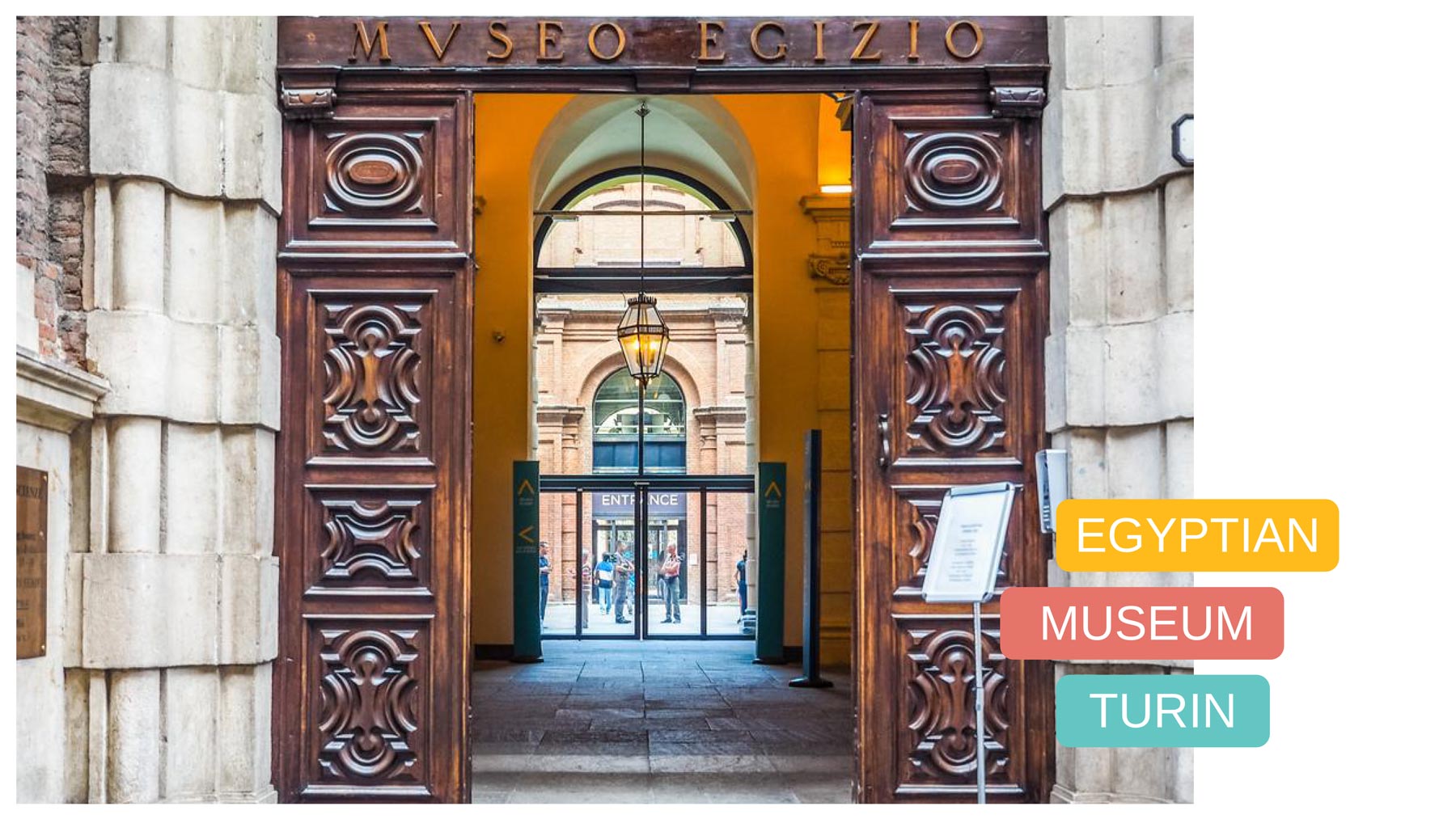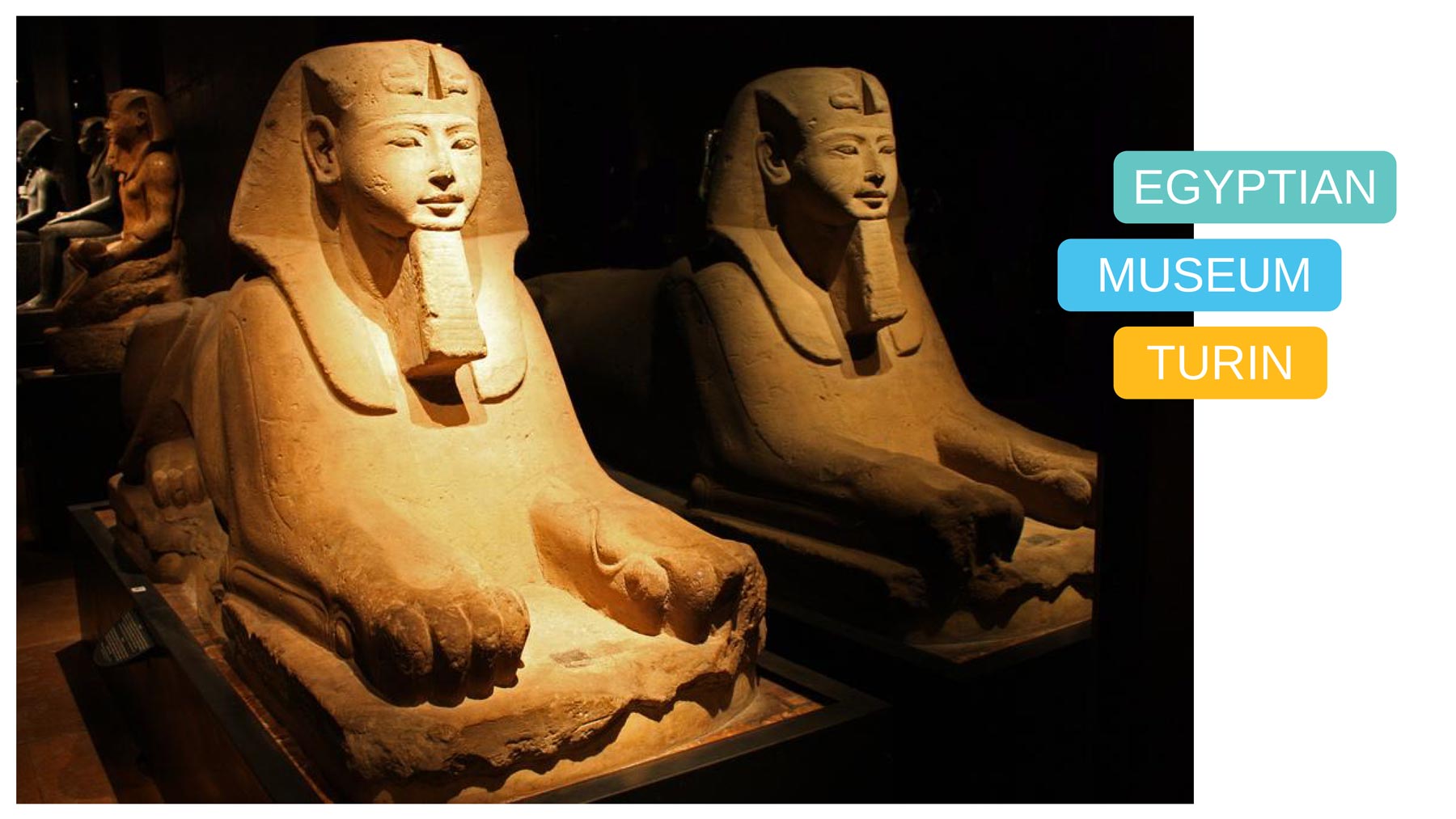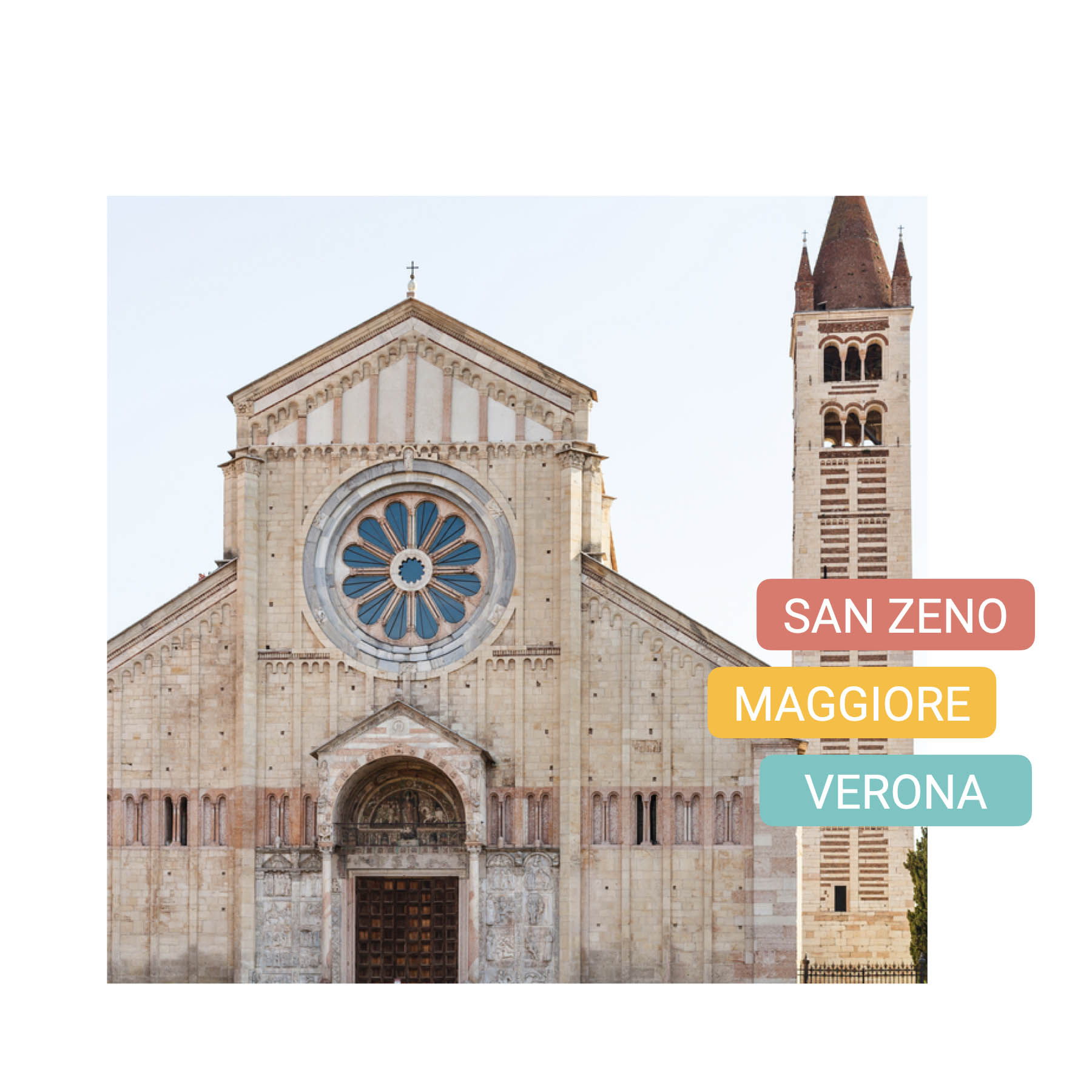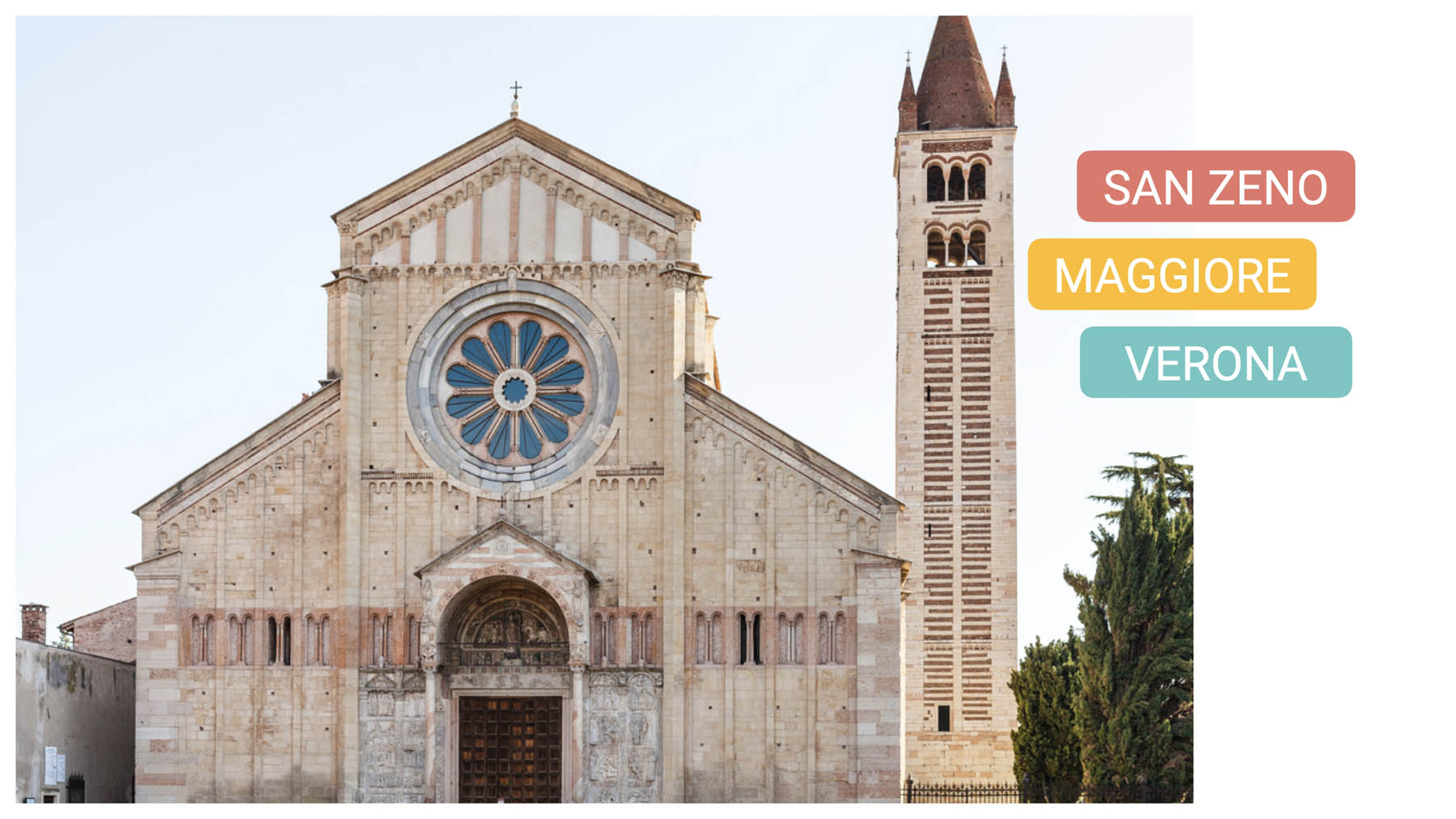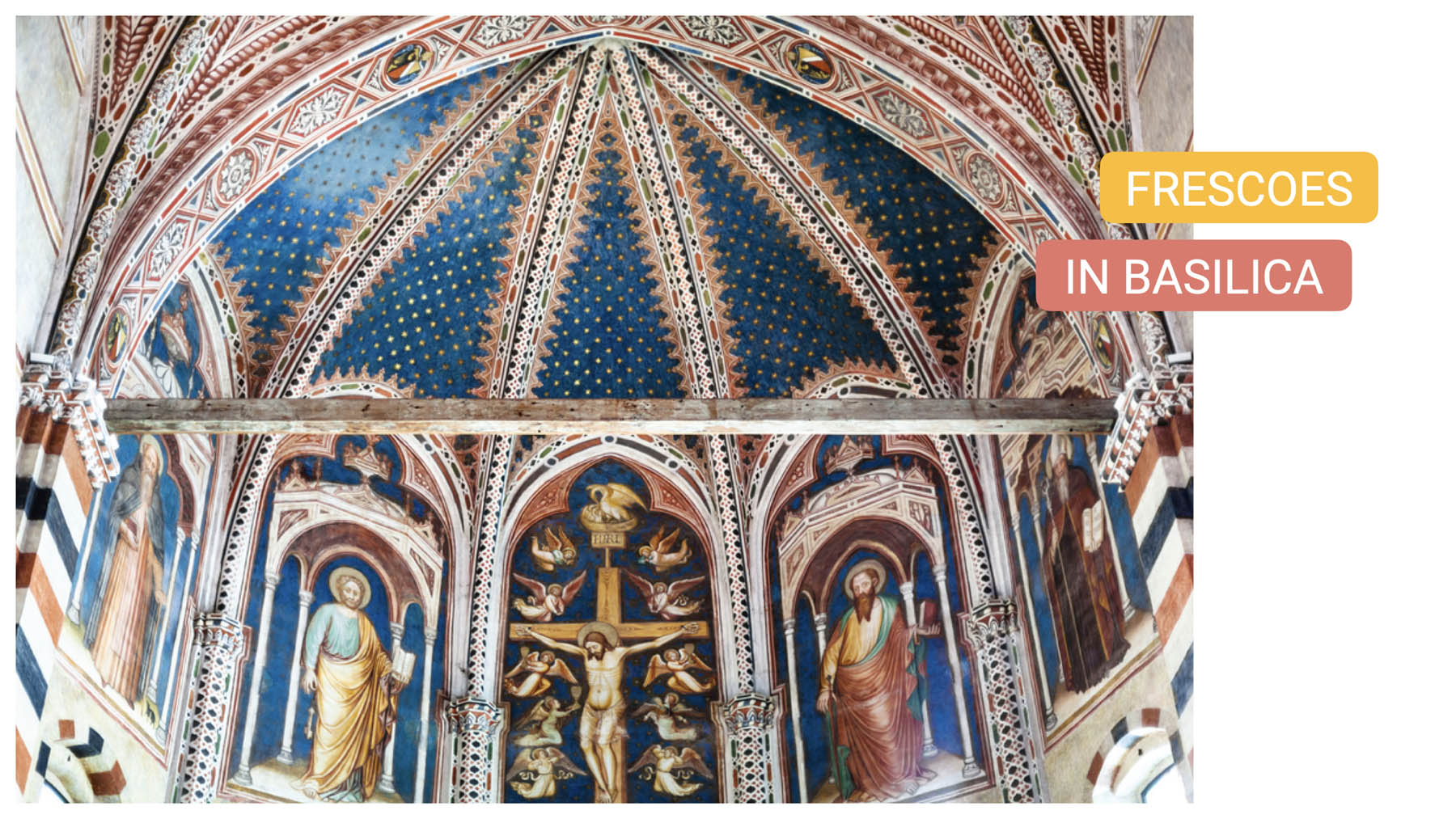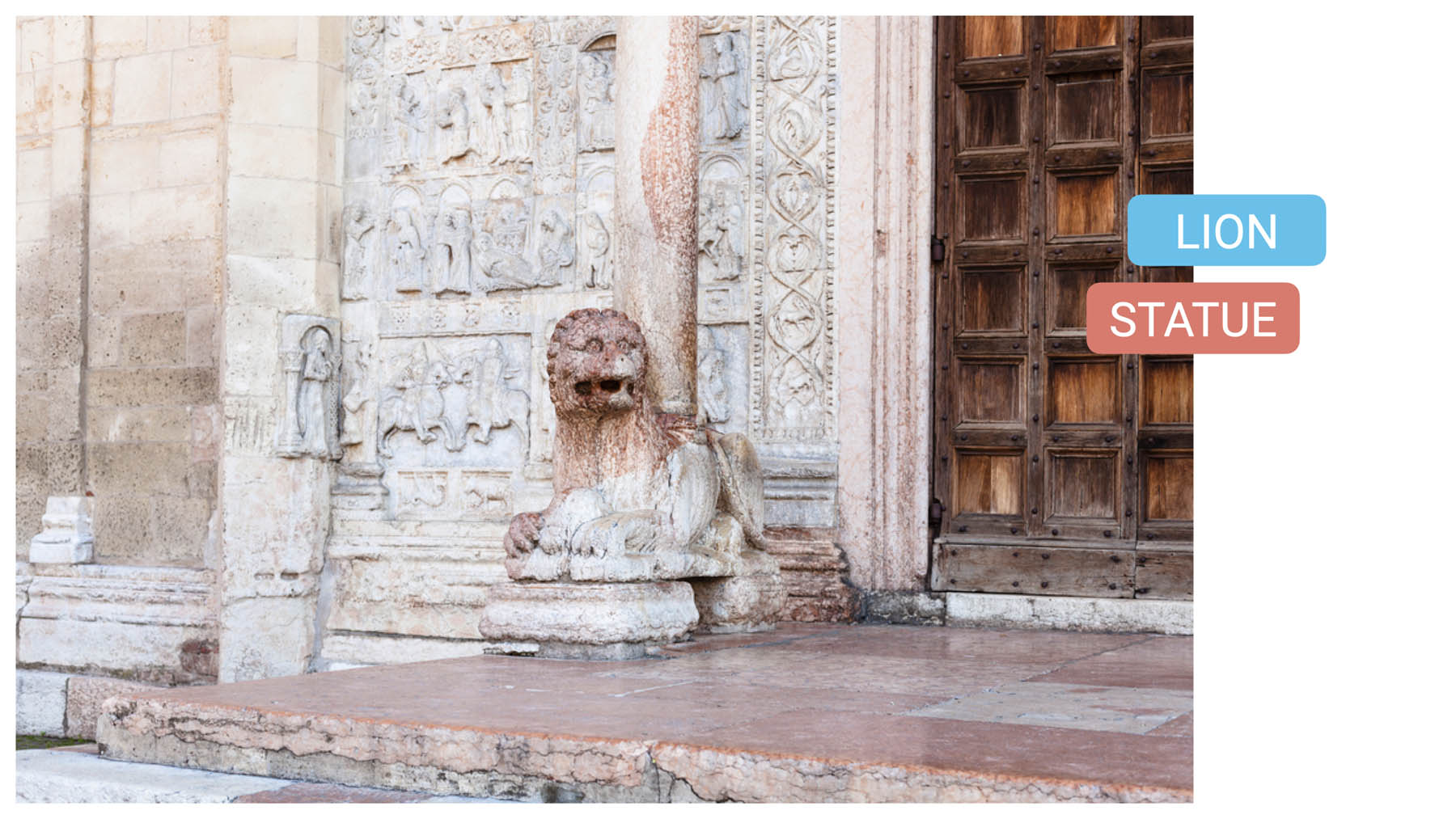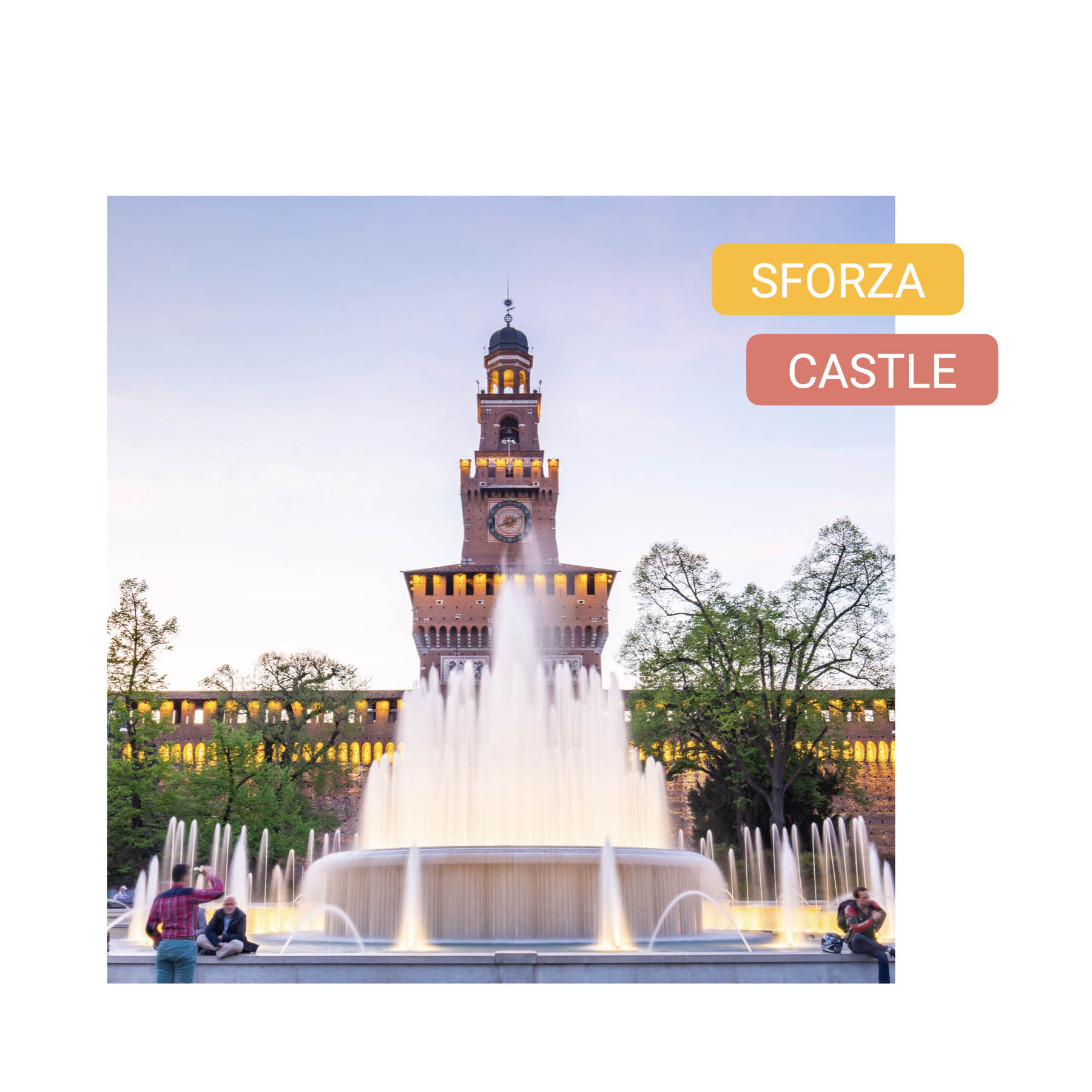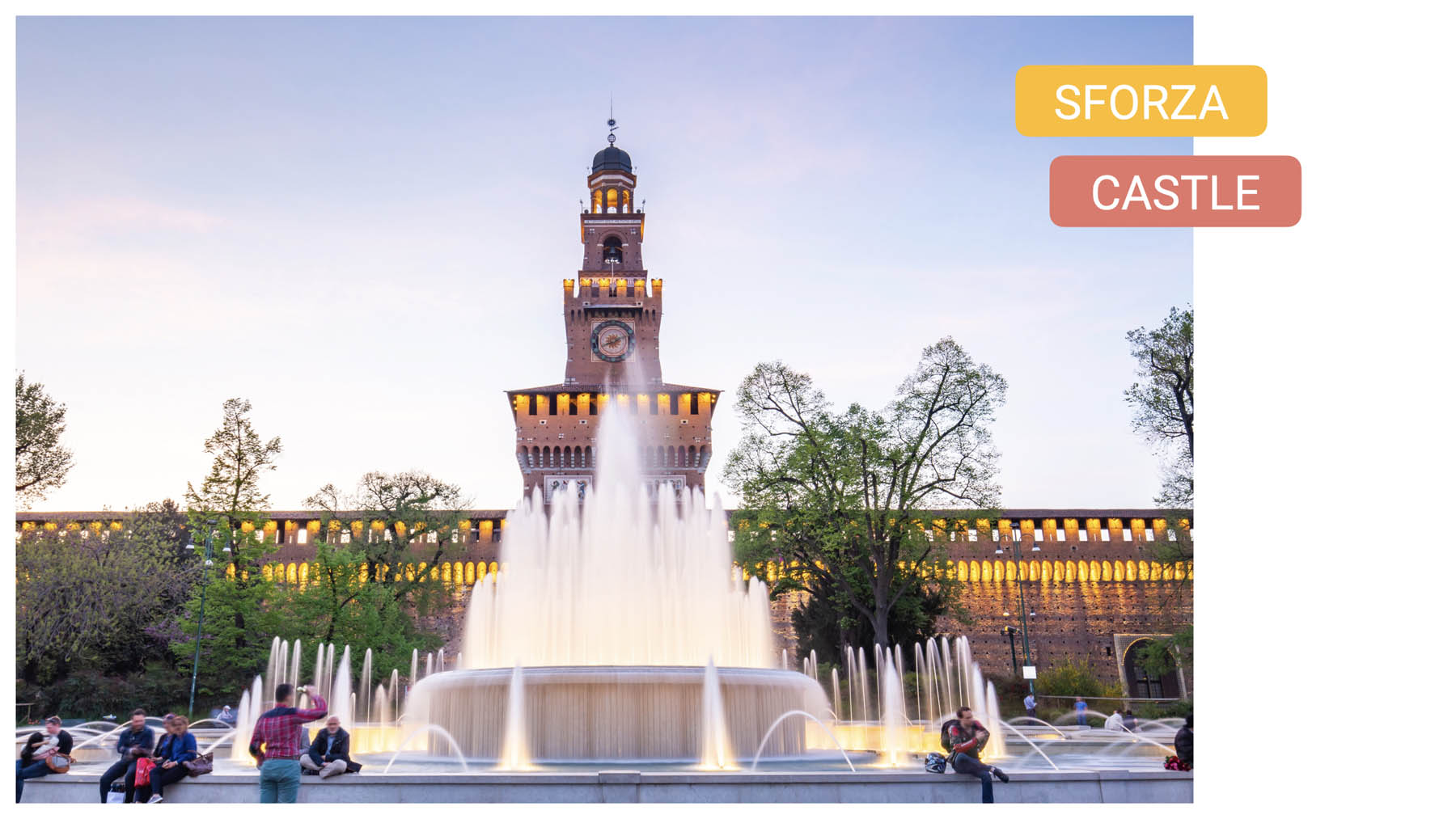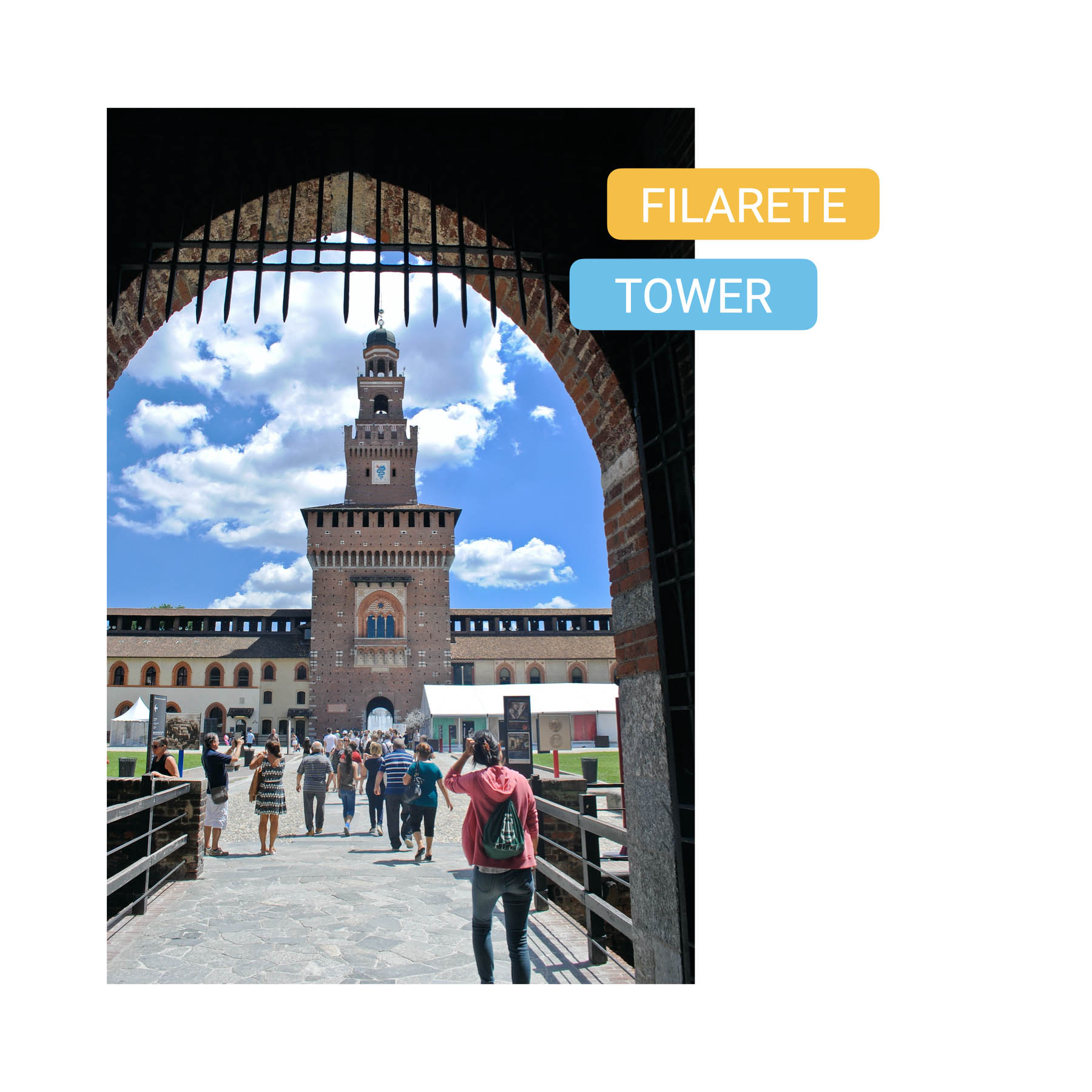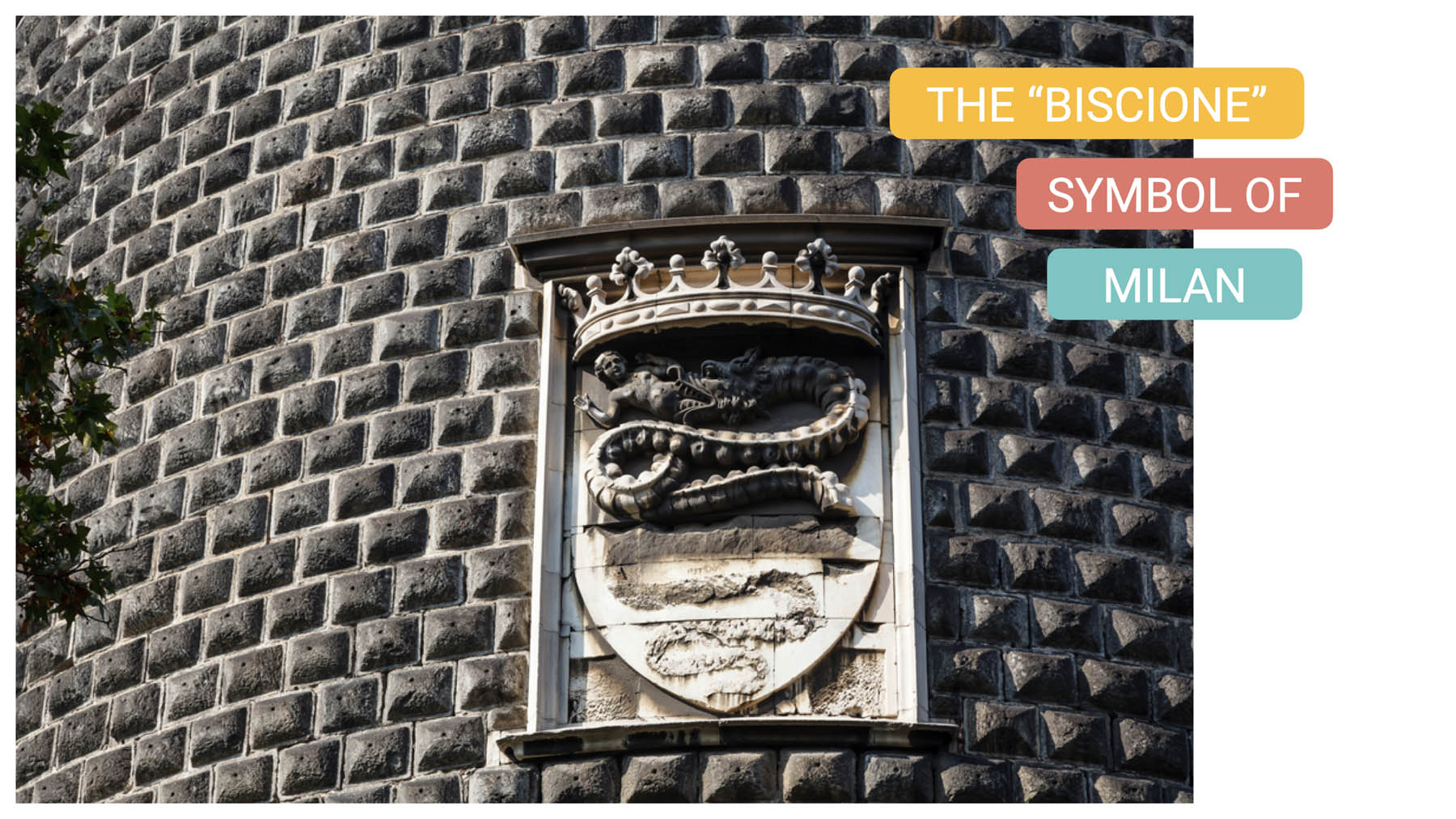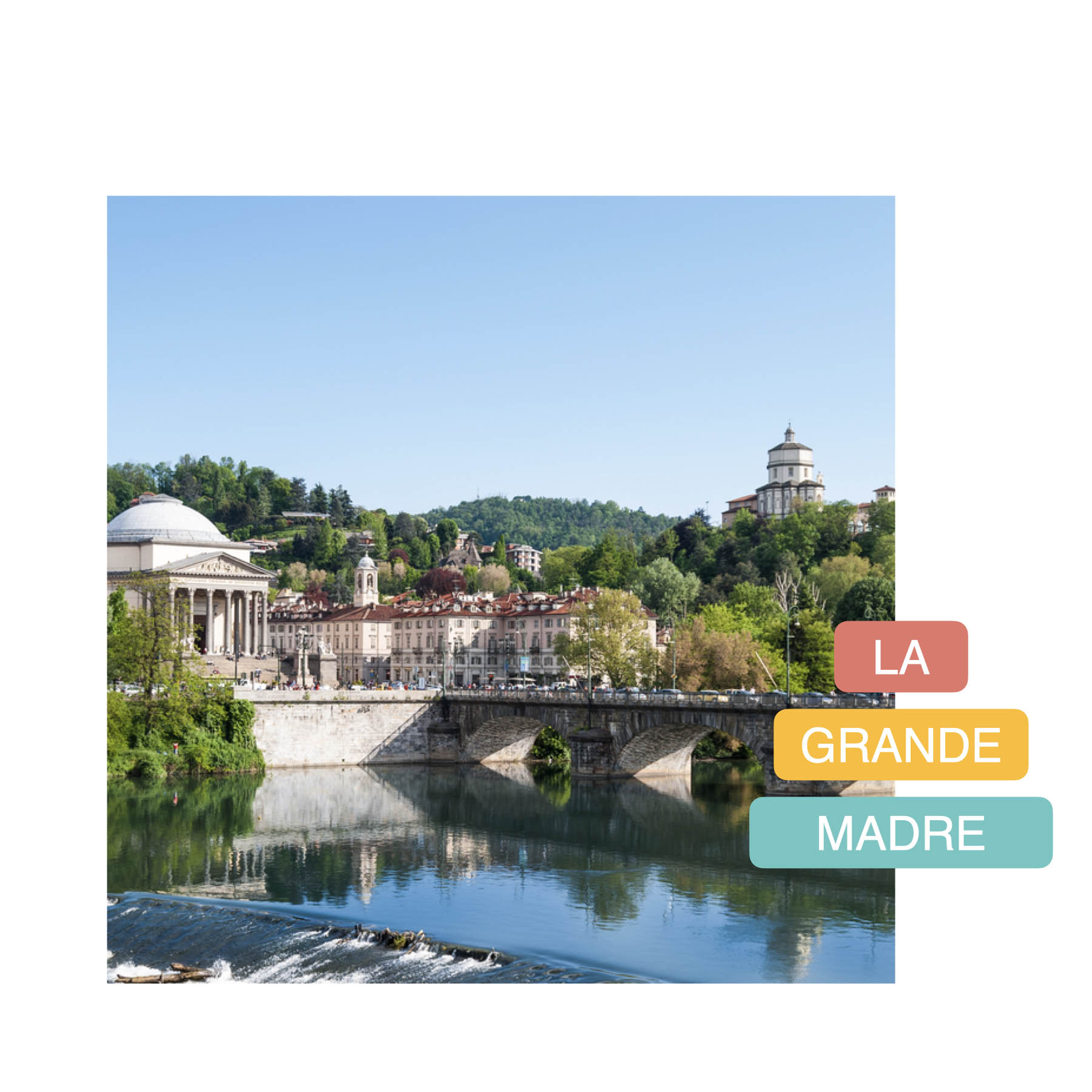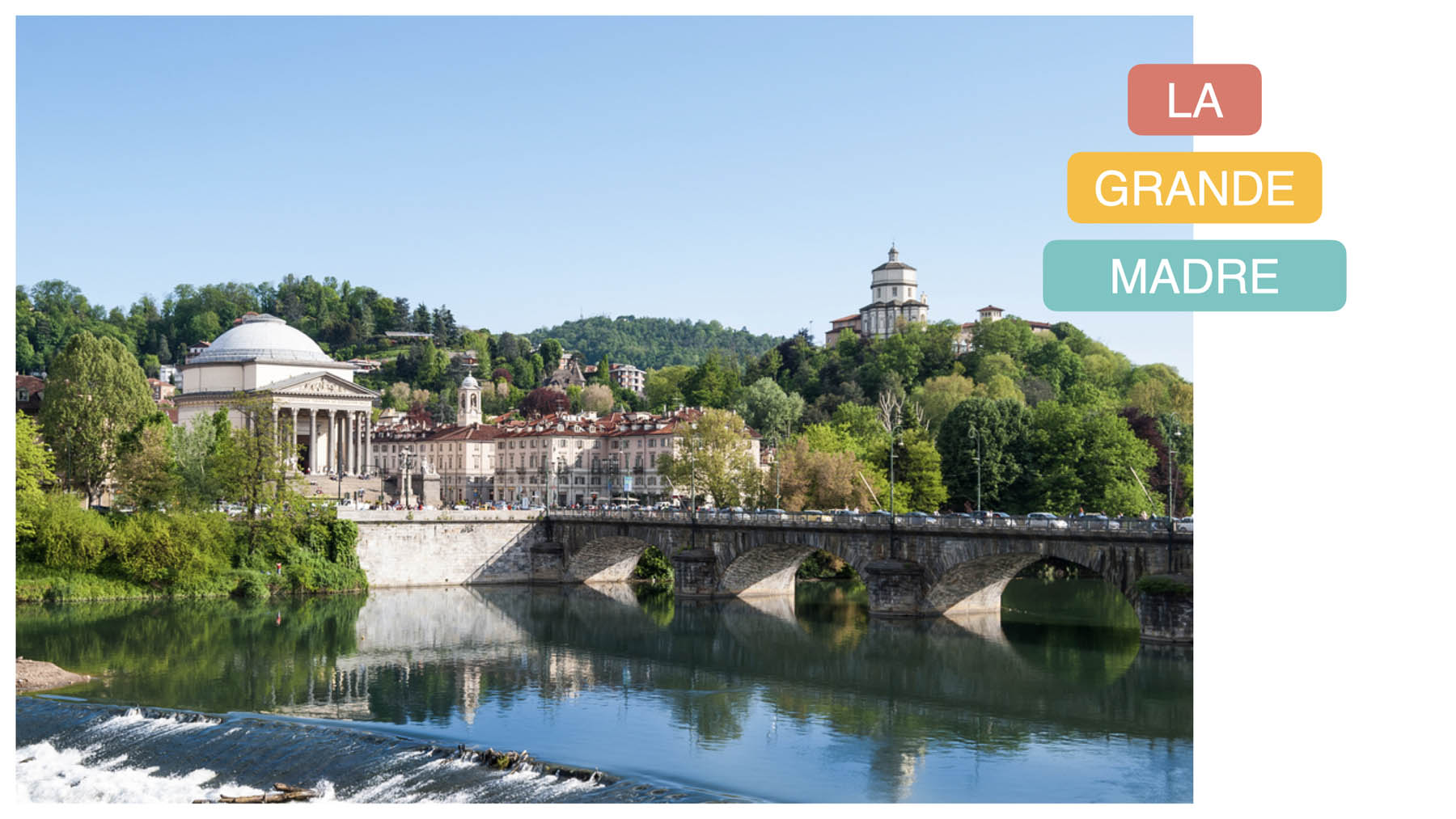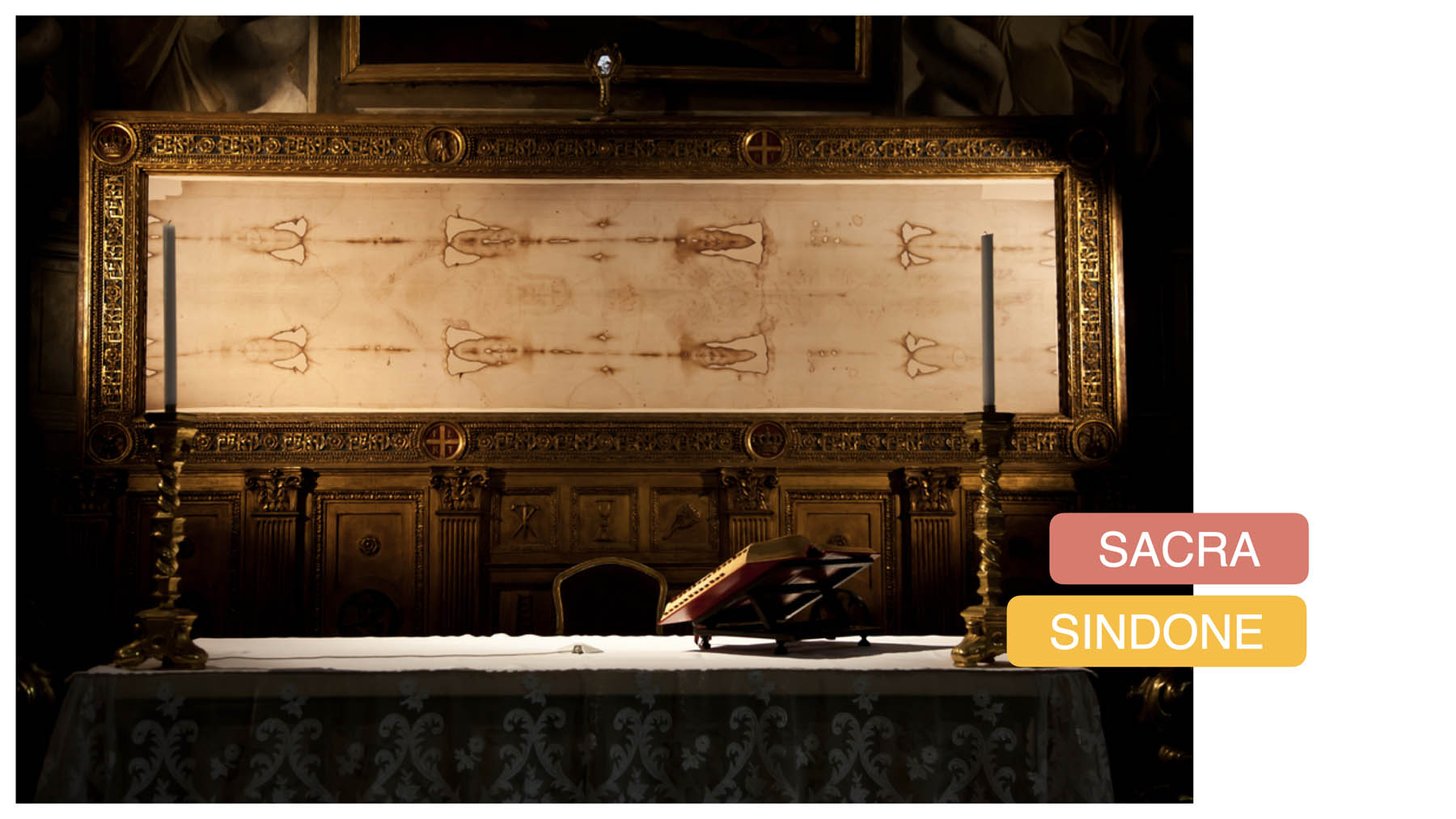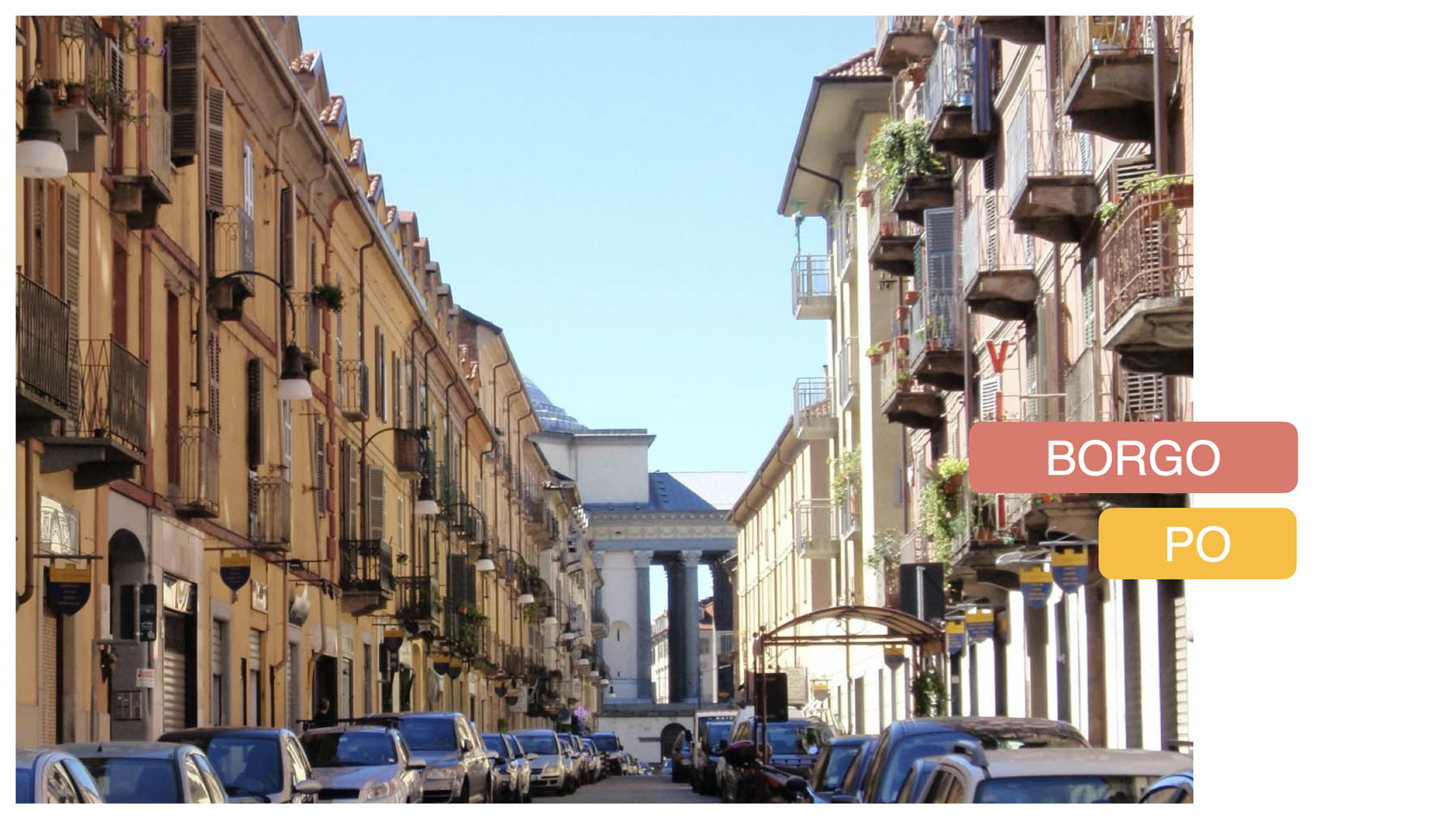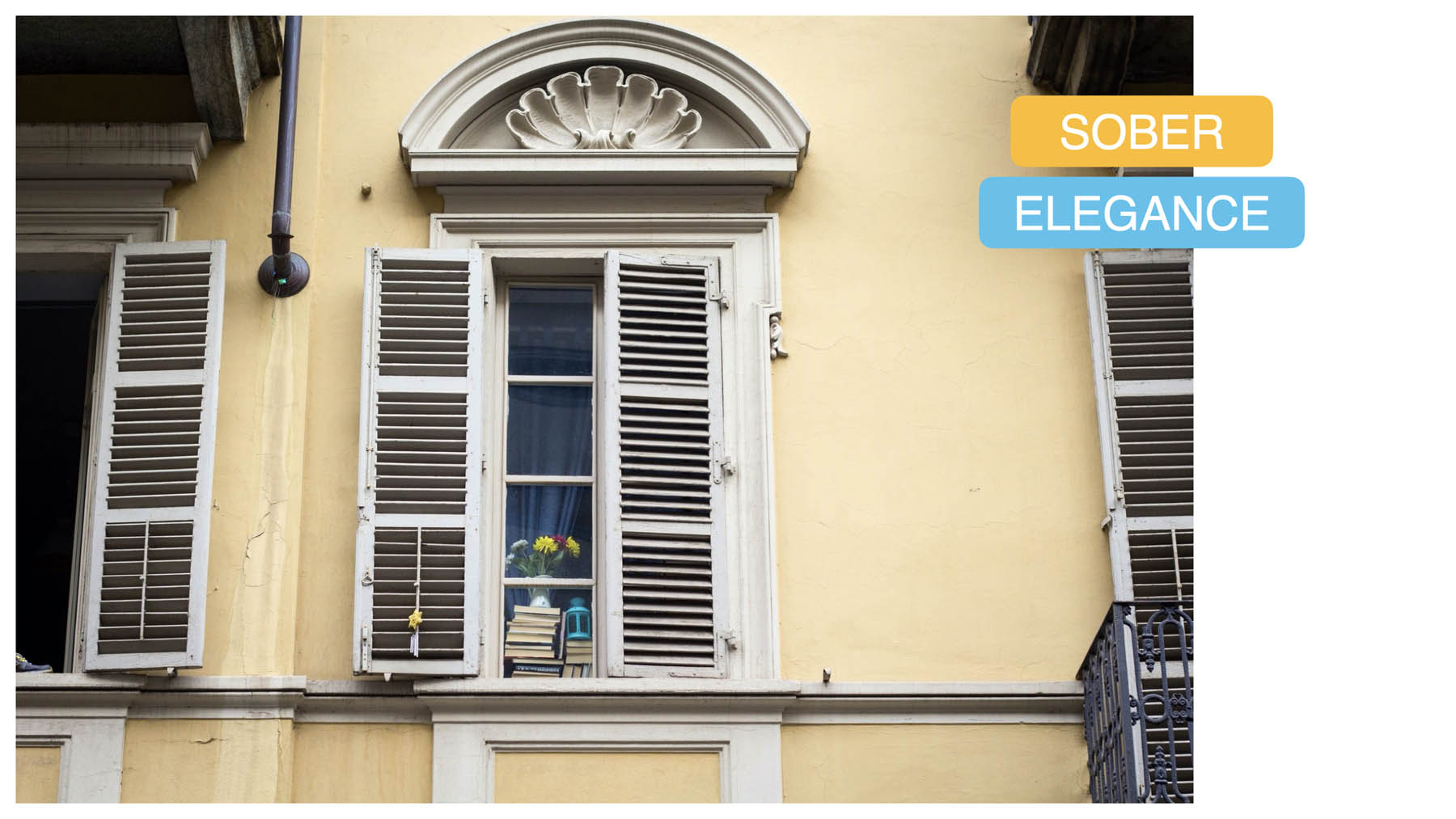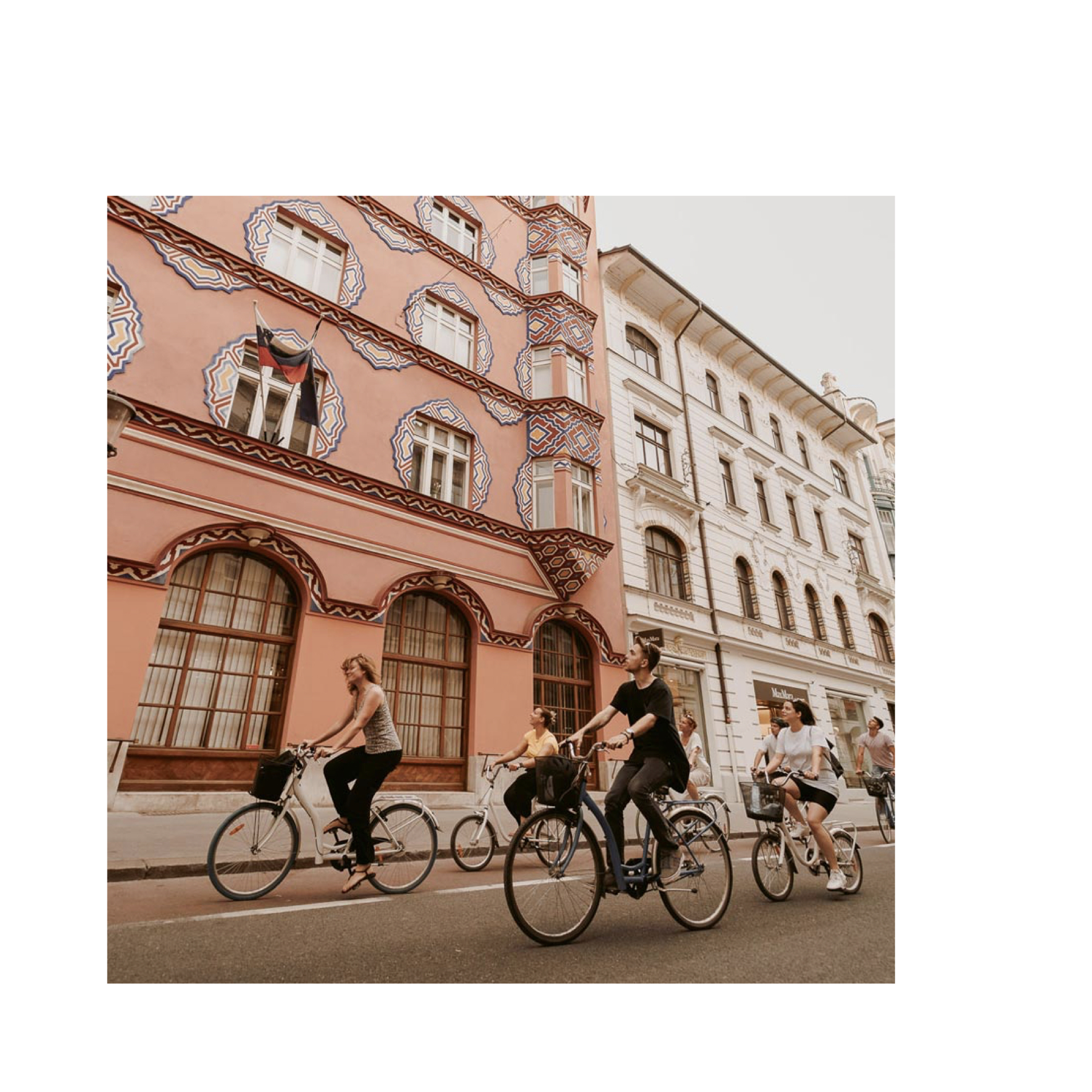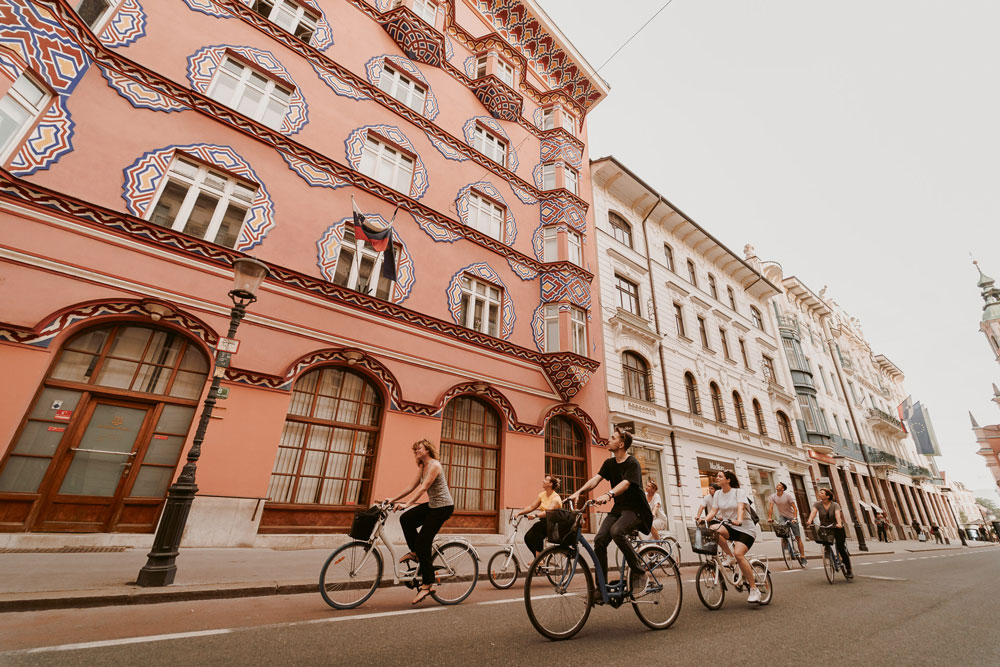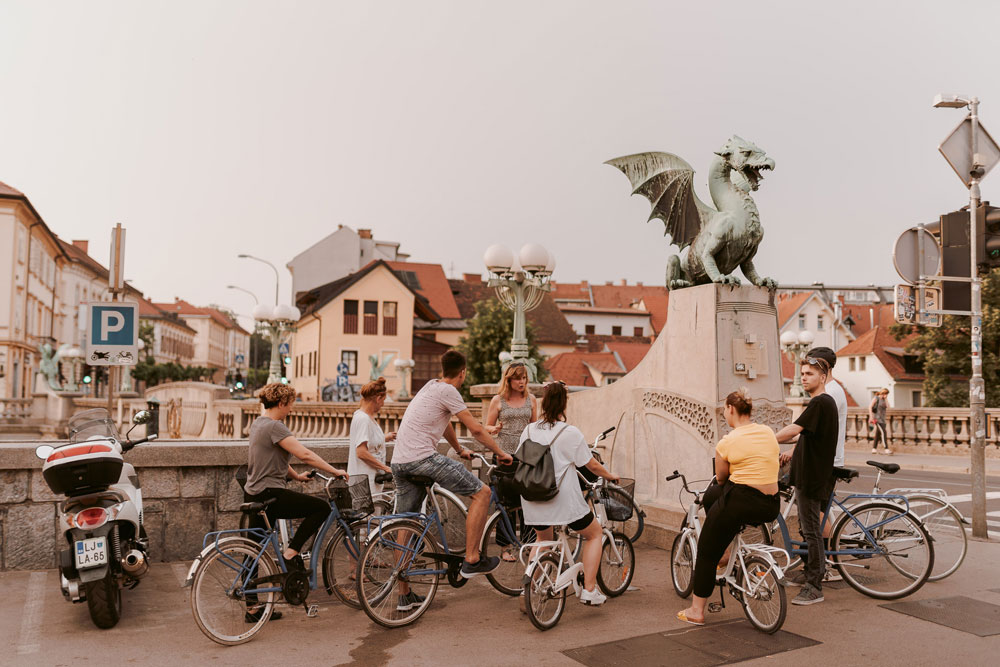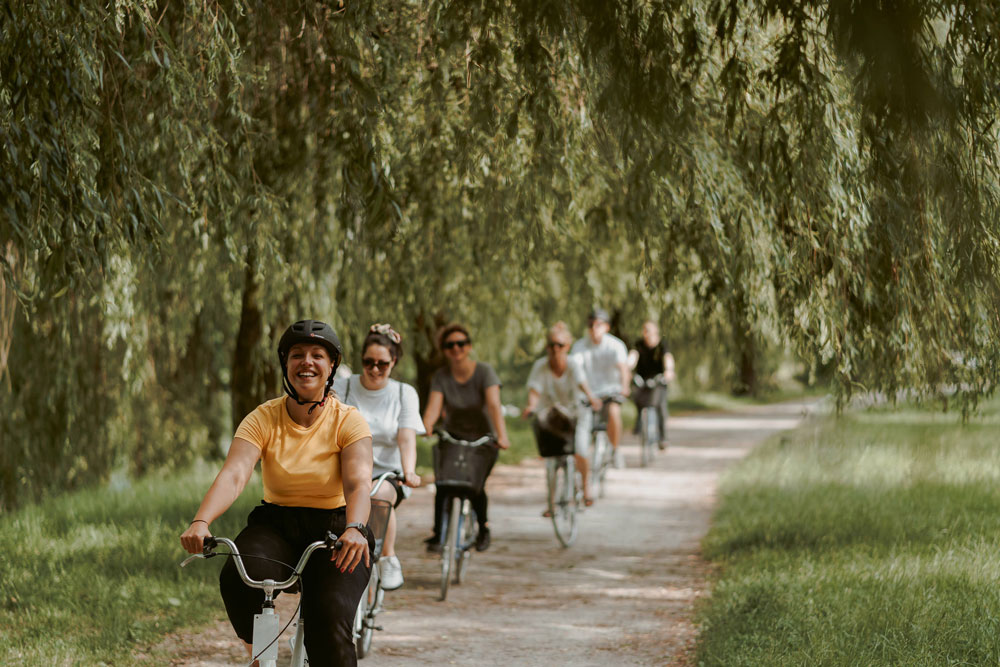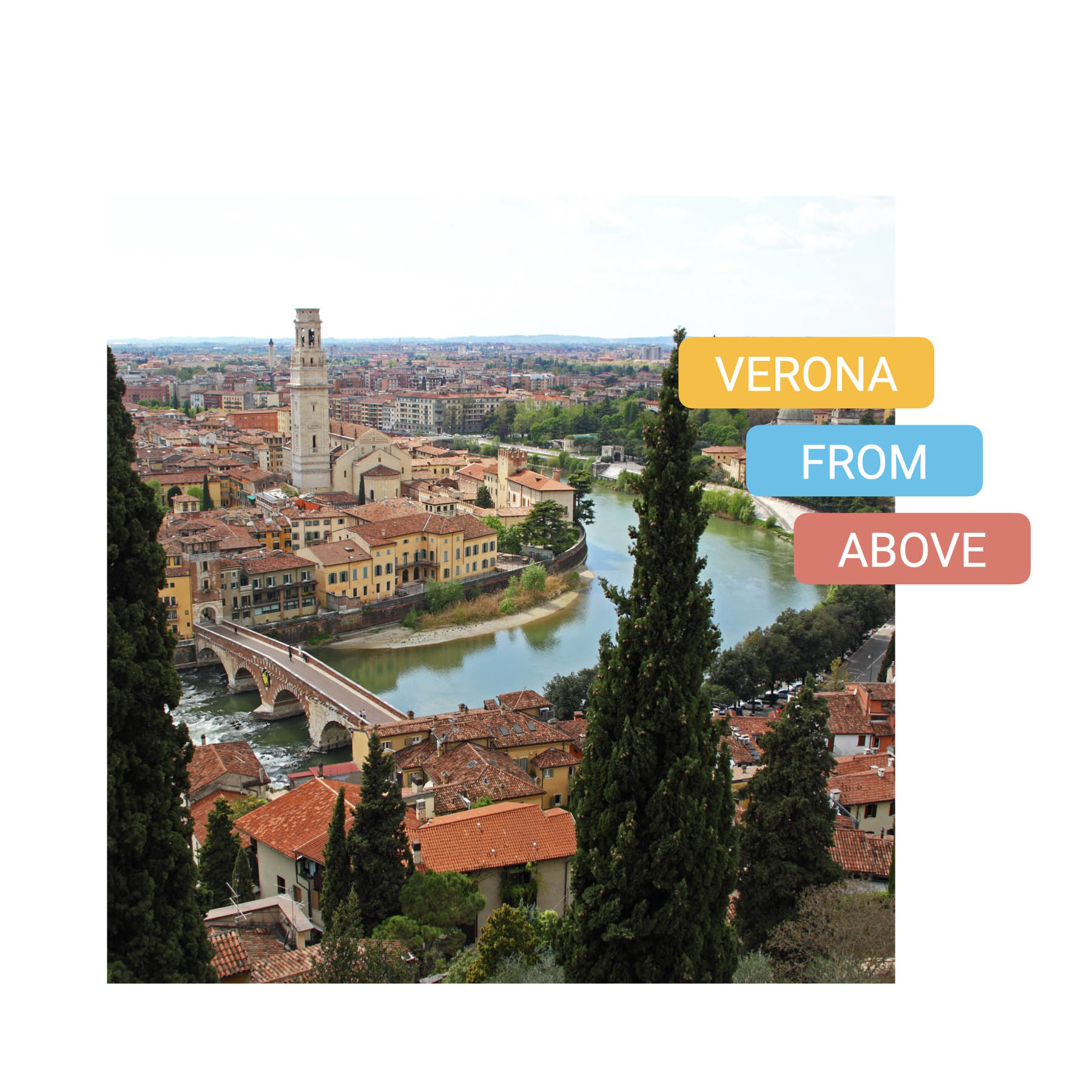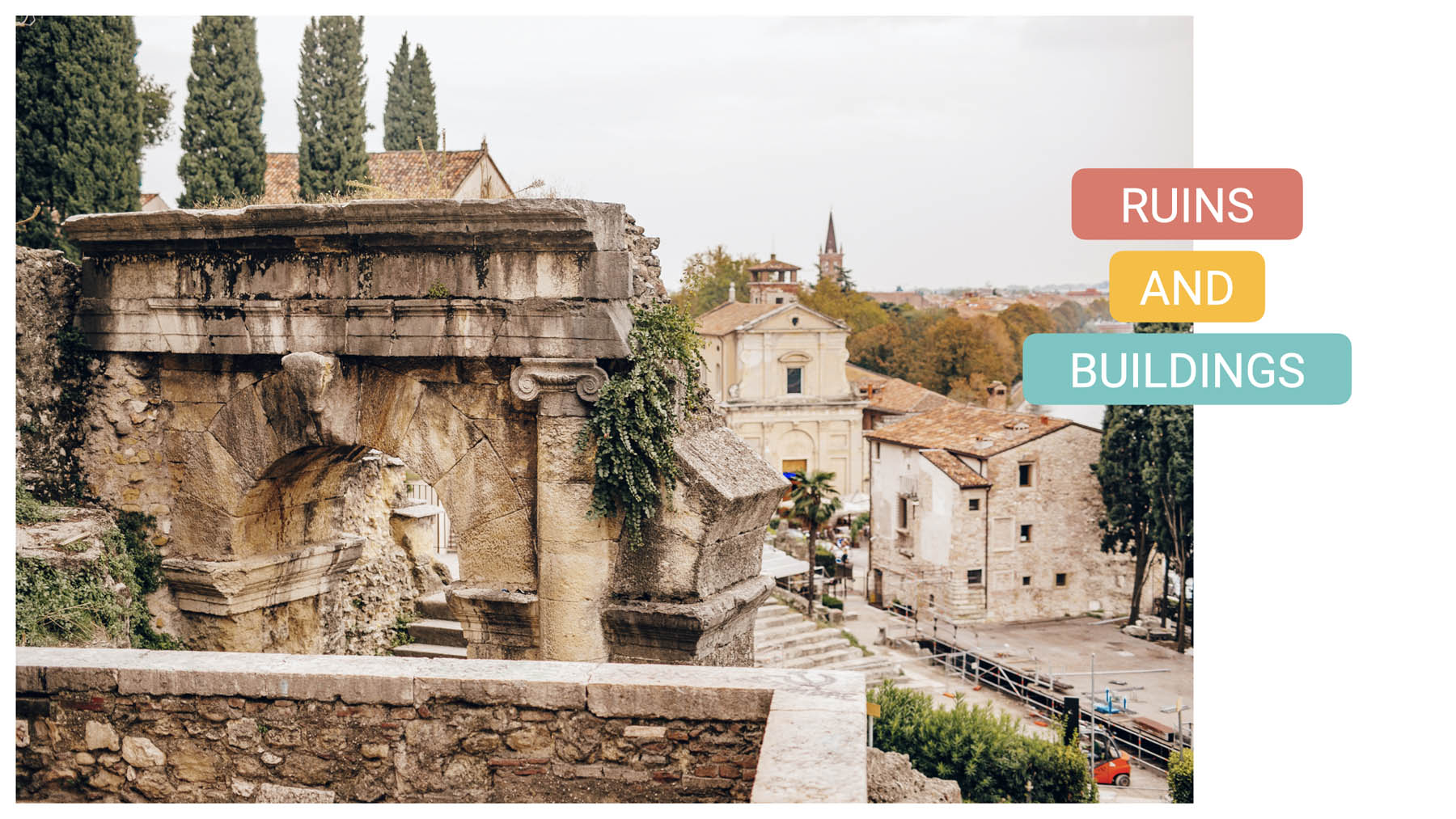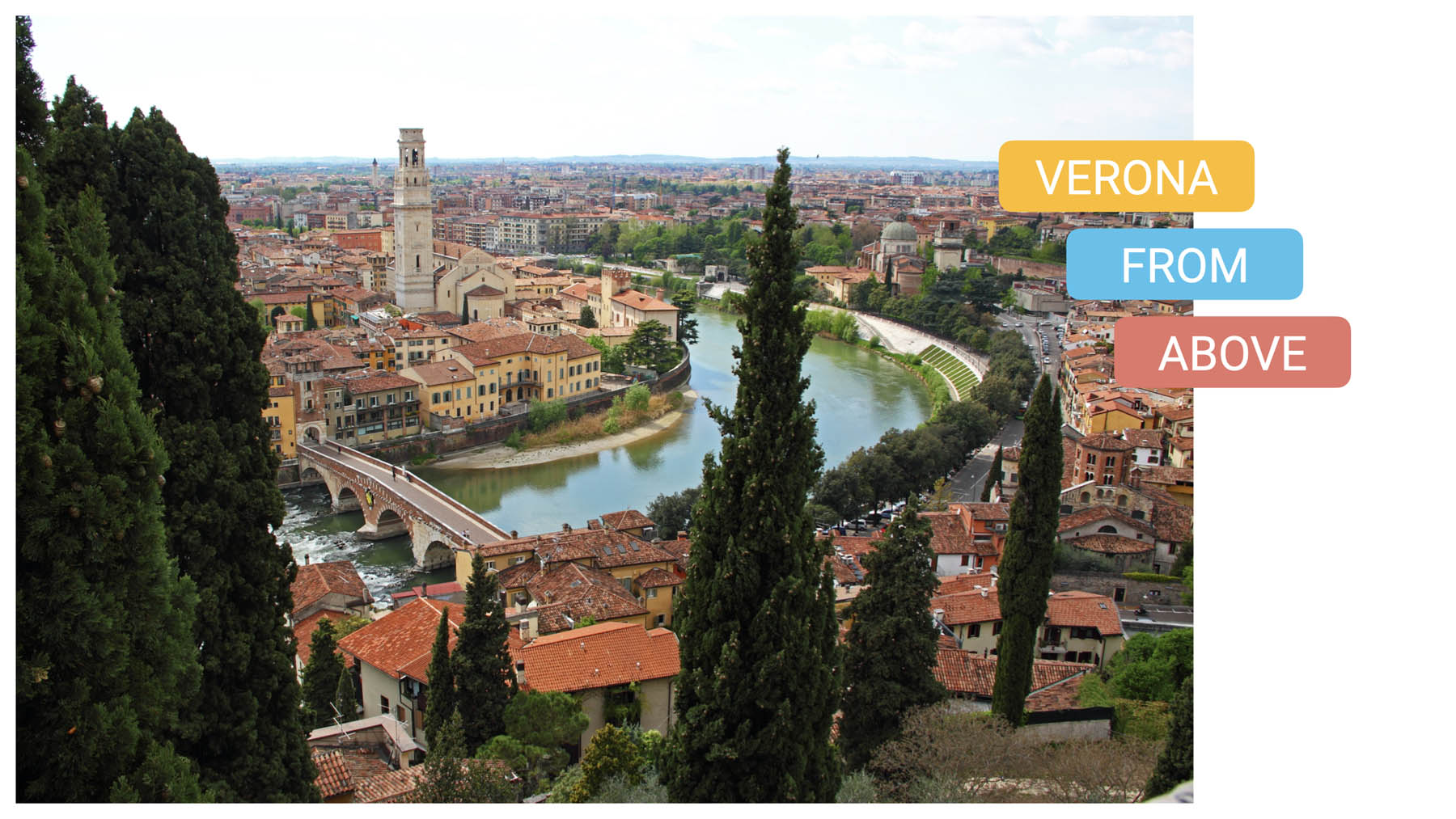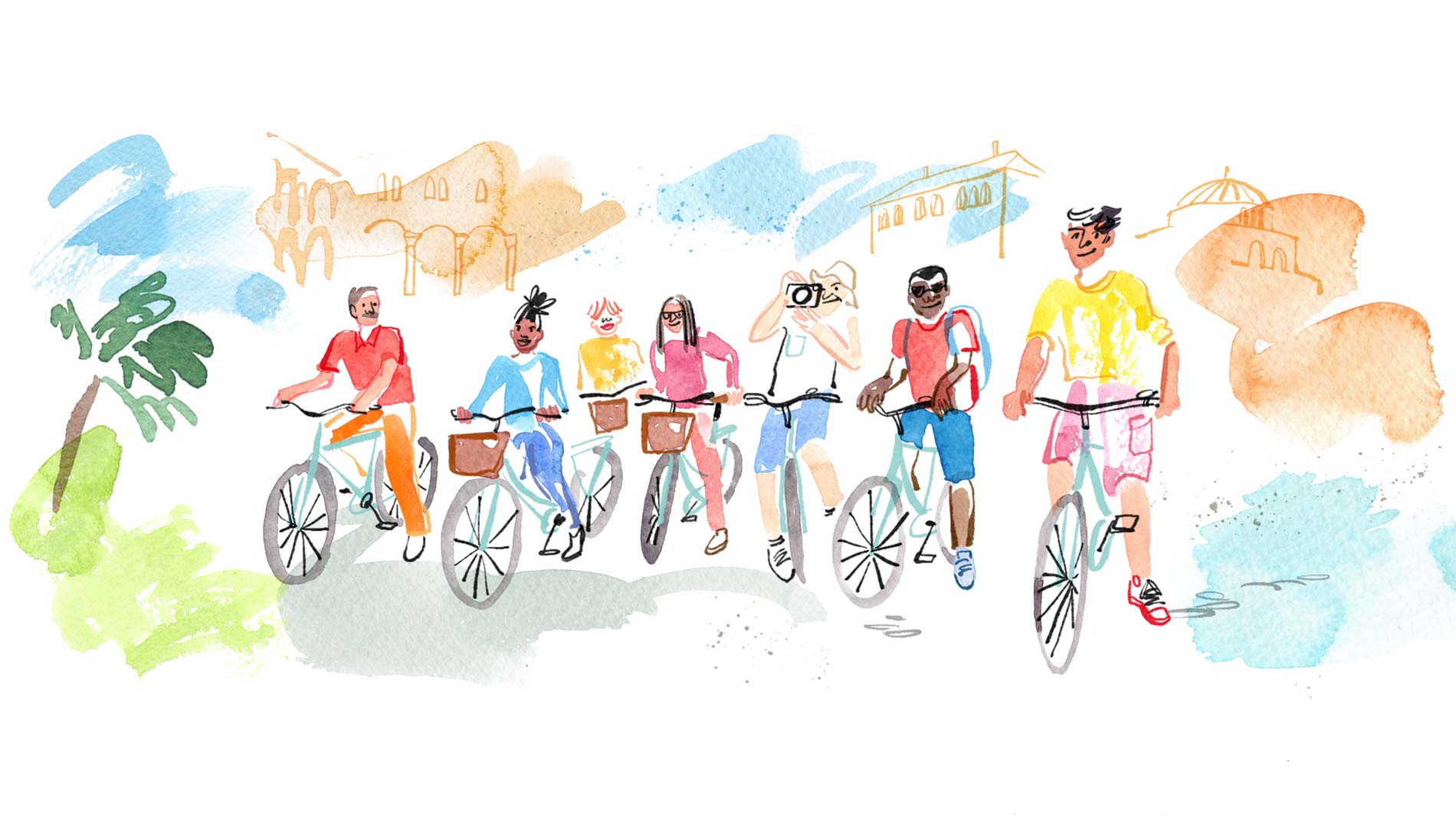Milan, the city of fashion, of the Duomo, and of the Scala. It’s also, the city of the unusual. You’ve seen pictures of the Sforza Castle, but have you seen pictures of the church of bones? There are many unique things to do in Milan beside the classic landmarks: do you know them?
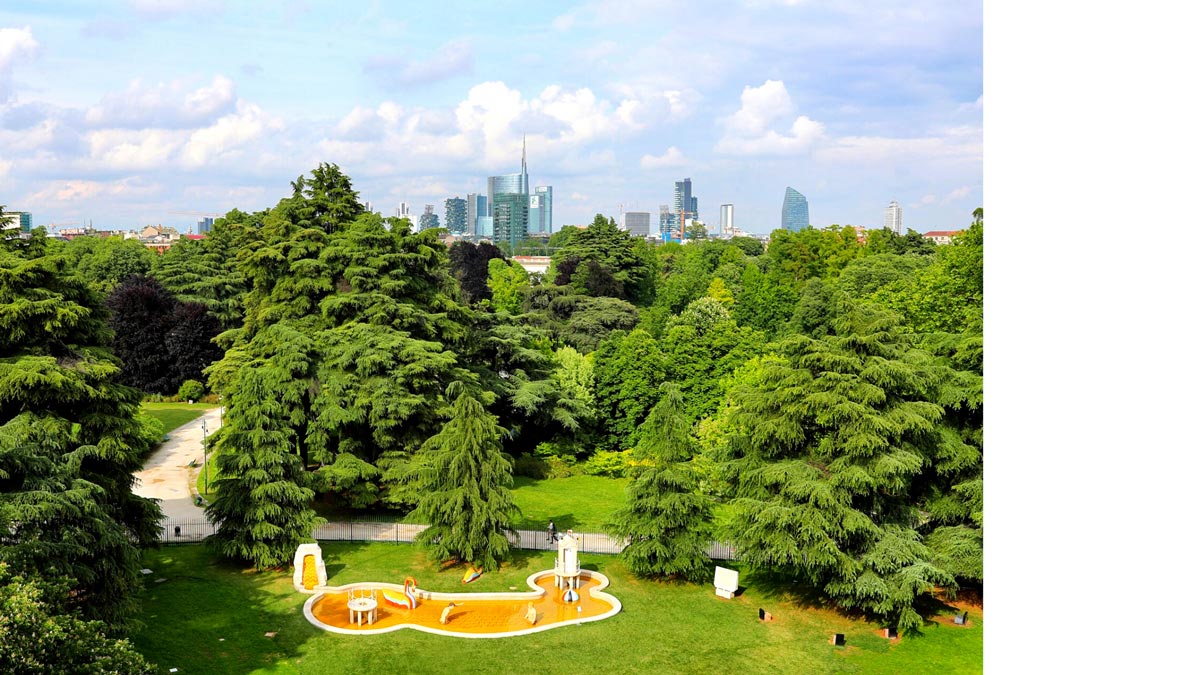
Unique things to do in Milan
- De Chirico’s mystery
- The secret of San Satiro church
- A horned Virgin
- The ear intercom
- The Statue of Liberty
- The Walk of Fame
- Admire Milan’s OTHER dome
- The neighborhood of cheese makers
- Our bike tour, pedaling through the highlights of the city
- Dialogue in the dark
- The Dramatram
- The 1930 Speakeasy
- Relax at the SPA, inside a tram
More info on our bike tour in Milan.
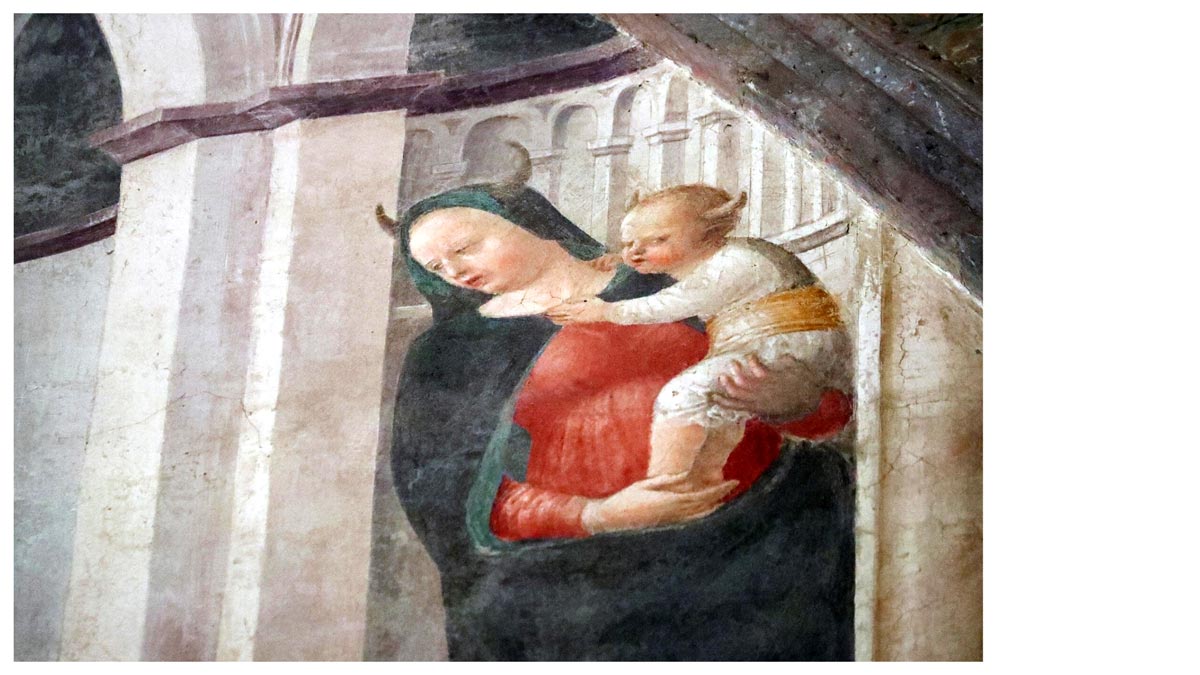
Unusual things to do in Milan: for the arts lovers
- The shirtless swimmers of the Fountain of Bagni Misteriosi aren’t everyone’s type. The Italian artist Giorgio De Chirico recreated a swimming pool setting at the Triennale. There is even a floating and colorful swan, the ancestor of Instagram’s floating flamingo.
- The famous Pietà (Piety) of Michelangelo is at the Vatican Museums. A lesser known version is at the Sforza Castle. Officially known as the “Pietà Rondanini”, this unfinished sculpture is one of the last masterpieces of the artist.
- Even the masters have to make drafts. At the Ambrosiana, you can admire Raffaello’s drawing of the “The School of Athens,” created between 1509 and 1511. Raffaello died nine years later and rumor has it, the Pope kissed his hand before the burial in Rome’s Pantheon.
- Milan was the city of artists. Donato Bramante was the architect of the San Satiro church and he put an optic illusion. Is the apse truly there?
- One church with an illusion, another that is all too real. At San Bernardino delle Ossa, the walls are covered in bones and skulls because the priests ran out of space.
- The Horned Virgin with scary hornes a unique character in the fresco at the Sant’Eustorgio Cathedral. A ghost might reveal the reasons. Her name is Guglielmina la Boema and, after her death, she was labeled heretic. Obviously, she didn’t take it too well.
These are some of the most unusual things to do in Milan. Let’s jump to the quirky ones.
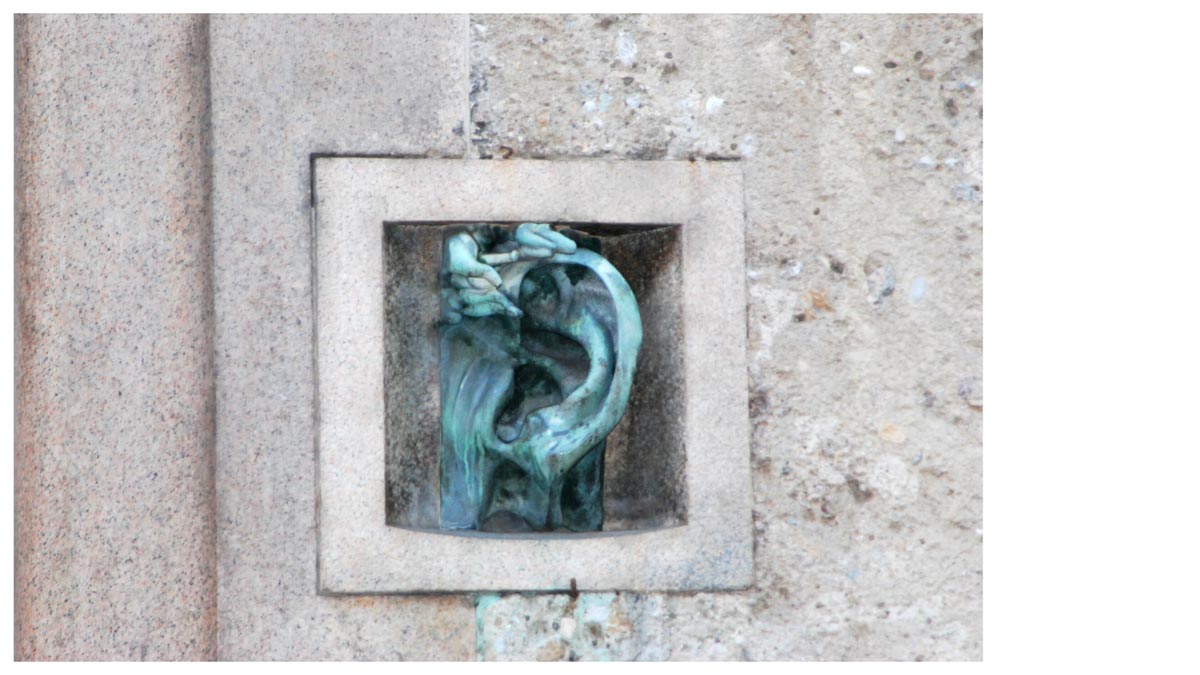
Quirky things to do in Milan: the weirdness even kids will enjoy
- The first Italian intercom was created in Milan in 1930 and it’s shaped like an ear. It’s a bronze sculpture located in the “Ca ‘de l’Oreggia” (House of the Ear). At least it’s coherent.
- Milan is quirky, like the naked statues of the “cà di ciapp” in Palazzo Castiglioni. It’s a sexy couple on a balcony. *wink wink*
- The Statue of Liberty in New York City has a twin and it lives in the facade of the Dome. While there is a whole debate on the inspiration, the Italian twin is 70 years younger than the American sibling.
- Forget the Hollywood Walk of Fame. In Milan, celebrities have left their mark in Corso Vittorio Emanuele. You will find the prints of Patrick Swayzer, Sylvester Stallone, and Sharon Stone.
- The Omenoni statues, or big men, are worth a picture. If you are looking for the specific civic number, beware. The palace still retains the old, sculpted Augsburg numeration in the thousands.
- Whoever told that there is only one Dome in Milan was lying. In Via Pitteri you will find the replica of the Cathedral’s interior. And it’s a gorgeous 23 meter-high murales.
- If you are looking for an Instagrammable spot, you can’t miss the colorful houses of Via Lincoln, the Italian Notting Hill.
- You’ve never experienced anything like “Dialogue in the dark.” For one hour, you will be guided through different rooms that will experience only with touch, smell, hearing, and taste. The Italian Association of Blind People organizes this activity to bring awareness.
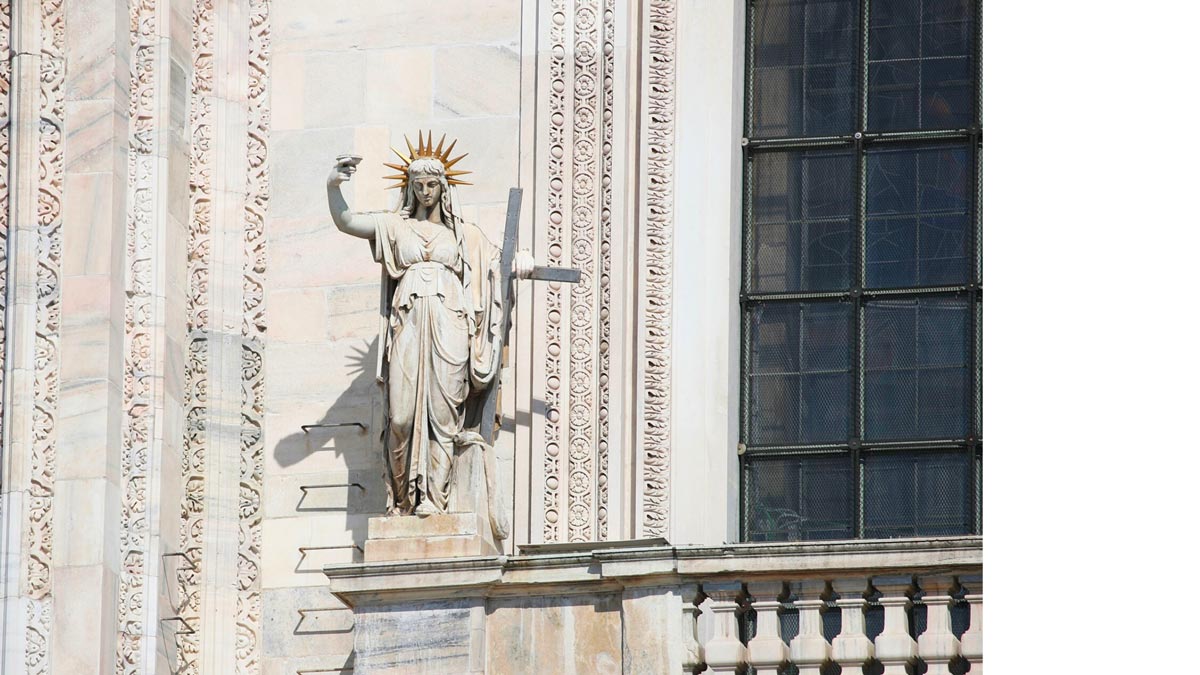
Unusual things to do in Milan: travel back in time
- In 1848, the Augsburg Empire ruled the city. In march, a five-day rebellion ensued. Centuries later, you can still see the signs of the cannonballs in Via della Spiga.
- When World War II broke, no city was safe. You can visit the underground anti-aircraft shelters and the Tower of Mermaids, an above-ground refuge. Here, the Fascist dictator Benito Mussolini hid before fleeing.
- Morning baths became a trend in the 1910s, long before SPAs were glamorous. In a hidden Milan, you will find the underground Albergo Diurno with Art Deco style.
- The “Burg dè furmagiatt” translates to the neighborhood of the cheesemakers. The name dates back to the era of trade on the river when cheese was one of the top imports. Does the Navigli still smell of gorgonzola?
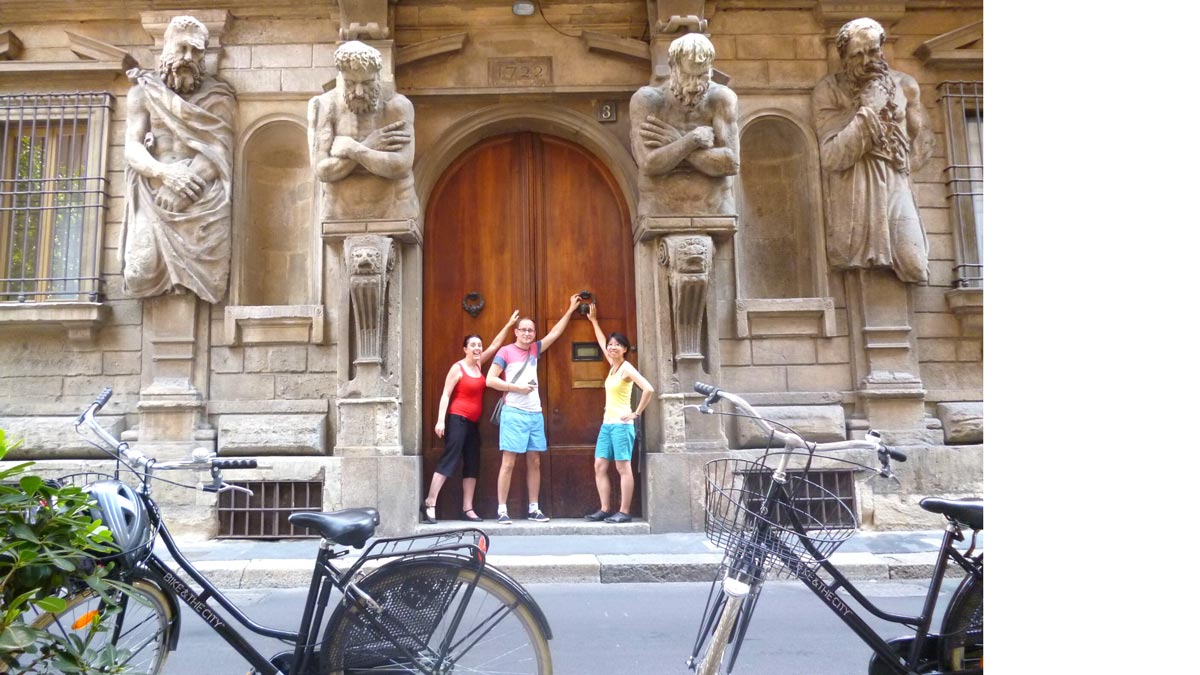
Alternative activities: time to have fun
- Our Bike Tour Highlights of Milan, to explore from the saddle. We will ride through the city’s eras.
- If you are a dramamama, you will love the DramaTram. It’s a theater inside a city tour, onboard a 1920s tram. Note that the show is every last Wednesday of the month.
- Have you ever wished to travel back in time? At the 1930 bar, you are in a Speakeasy during the era of Prohibition. The 1930 has the same jazz vibes, low lights, and shelves of bottles.
- The Navigli of the city speak to the past of Milan. You can hop on a ferry in the “Itinerario delle Conche” to discover the city by water.
- Take a look behind the scenes of the Teatro La Scala. Thanks to the alternative experience “Laboratori Scala Ansaldo,” you will see the theater’s labs. It’s a whole world behind the heavy, red curtains.
- If you need a break after a day of exploring, you can head to the QC Terme, a SPA inside a tram. You will be surrounded by the Spanish walls of the 1500s and by the Liberty style of the complex. The SPA takes inspiration from the ancient Roman baths.
Like a true metropolis, Milan hides secrets and it’s your time to reveal them: enjoy to find all the unique things to do in Milan.
More info on our bike tour in Milan.
Read also: Milan’s Porta Nuova District.
